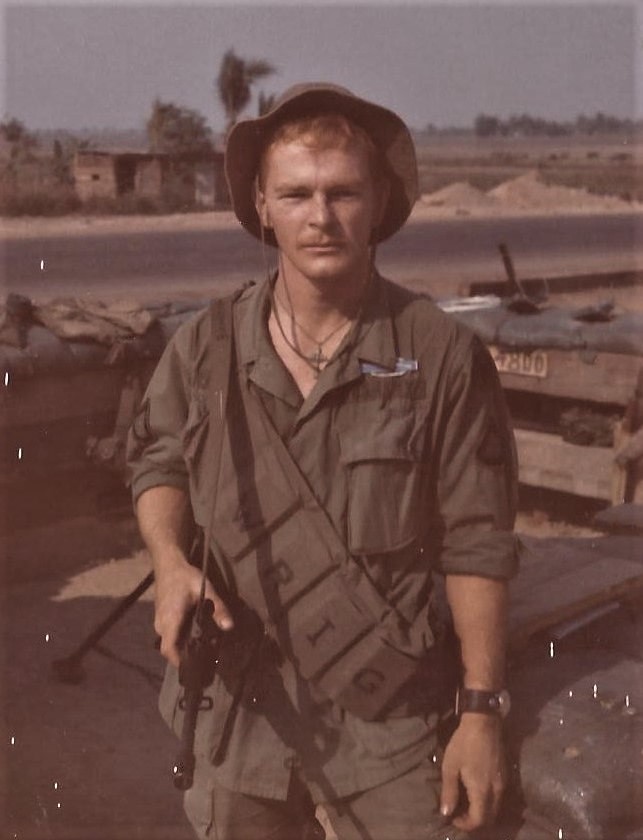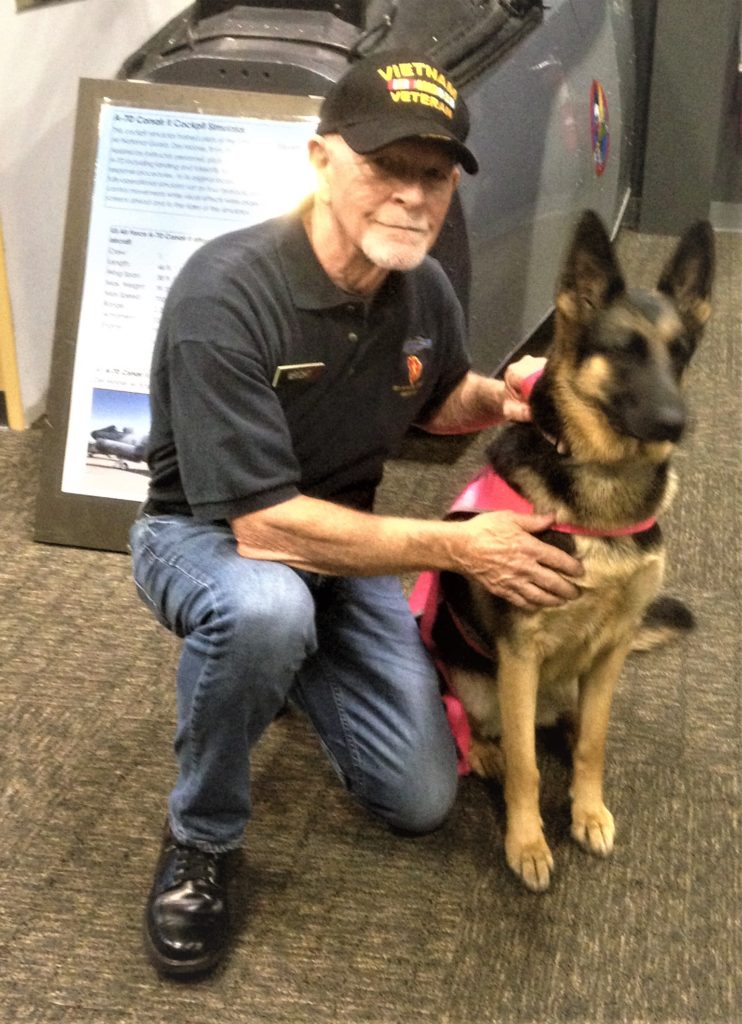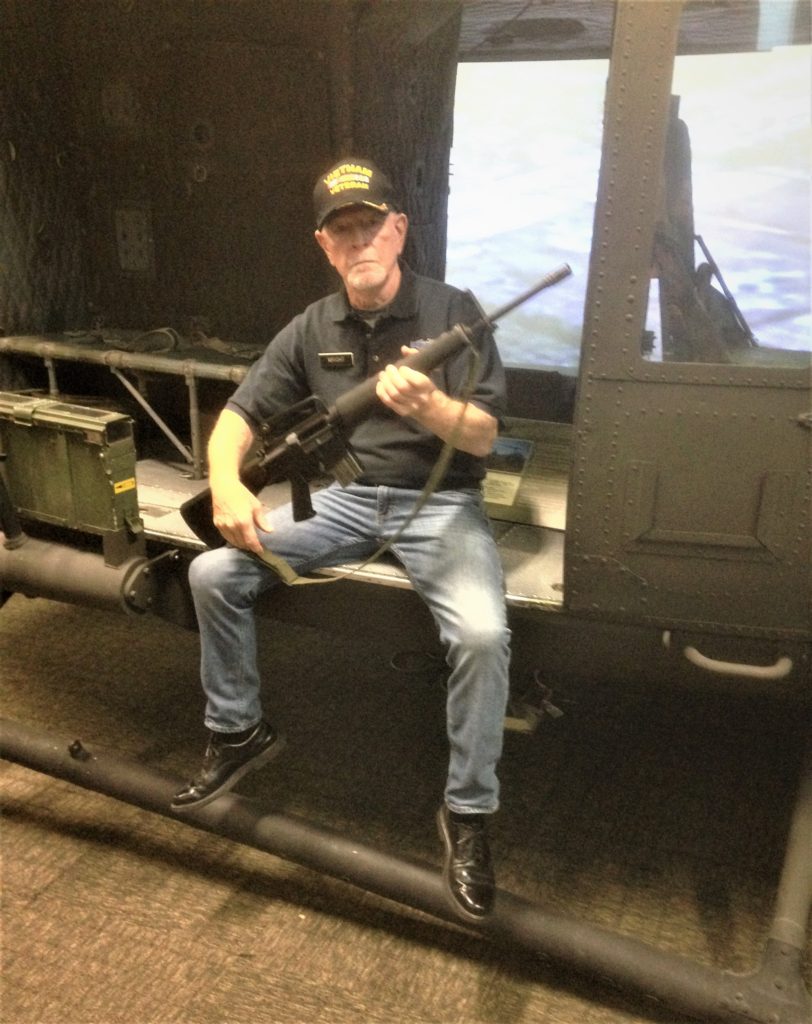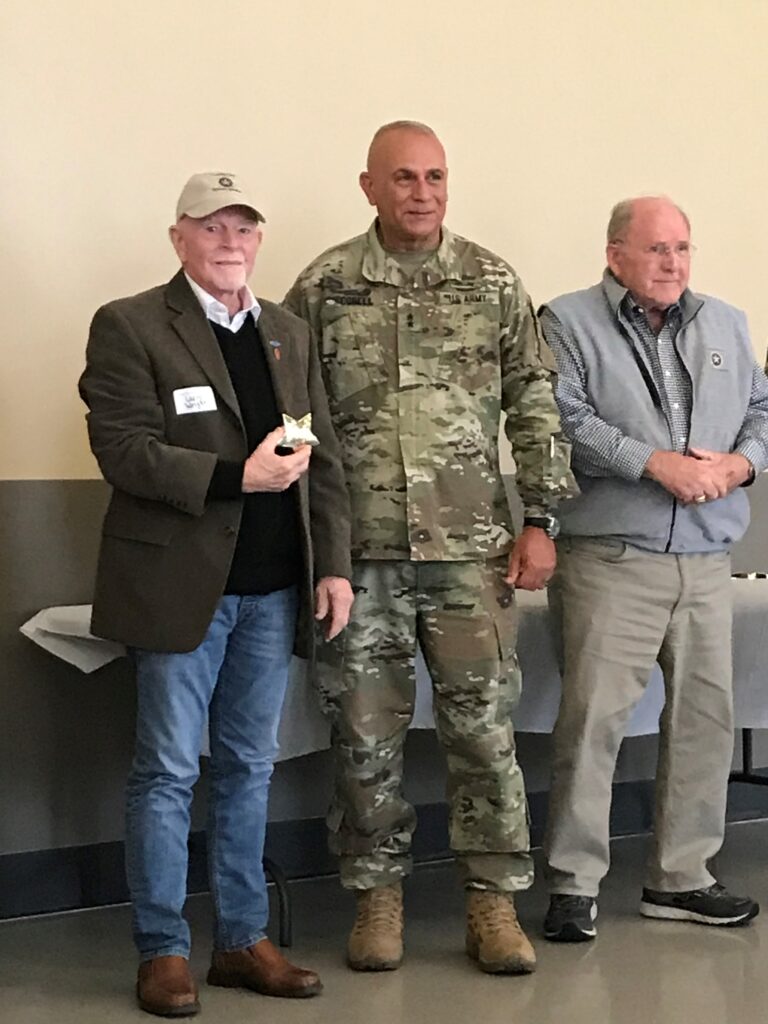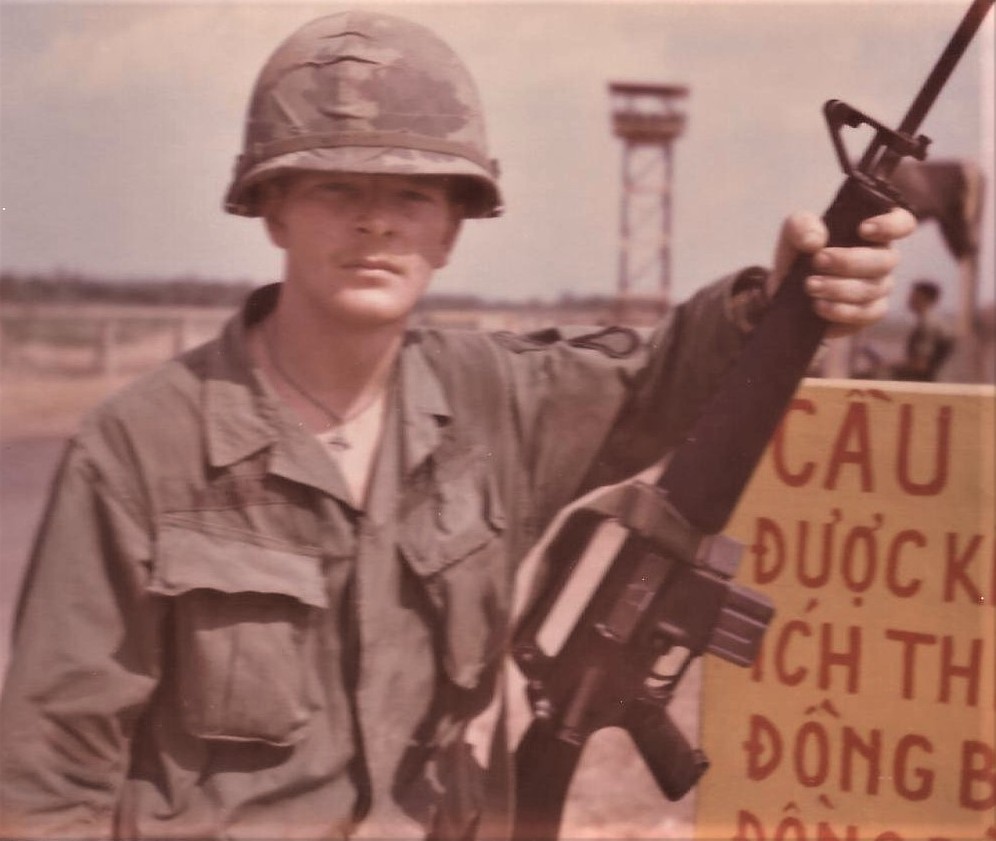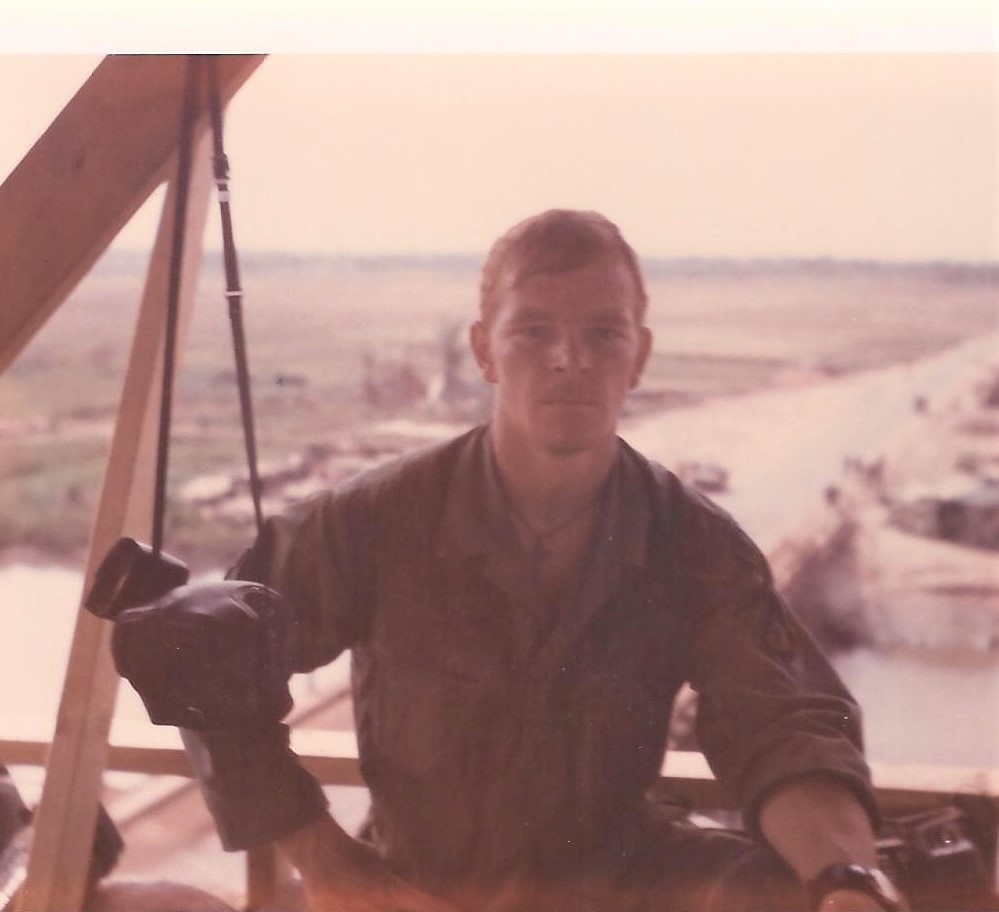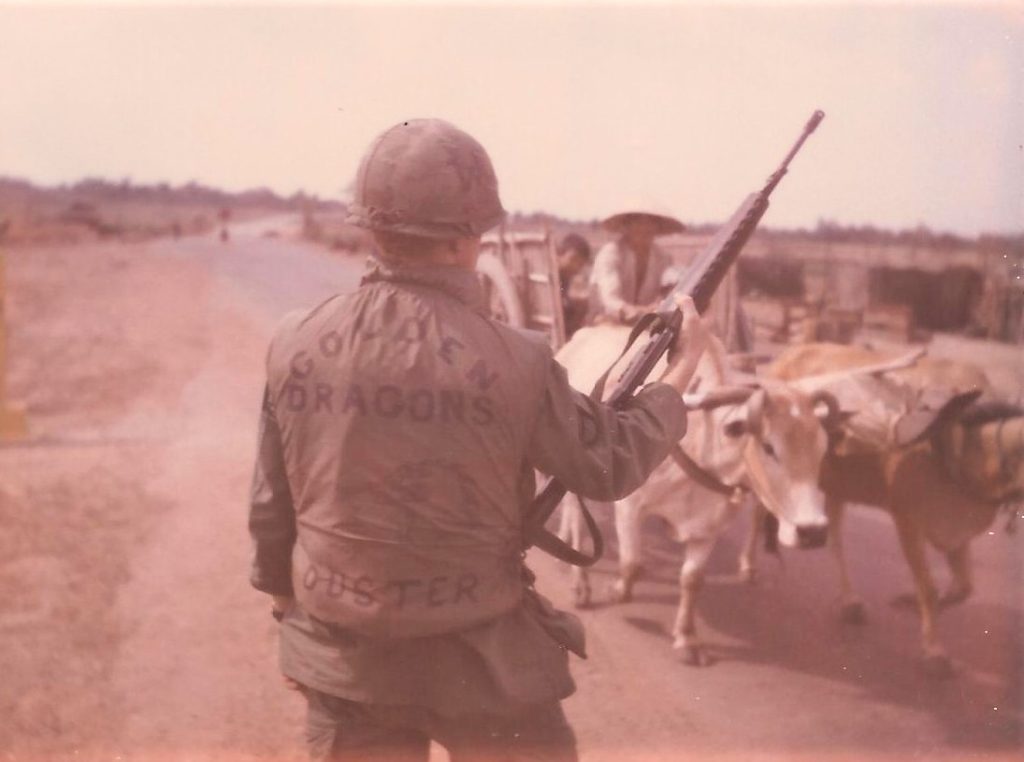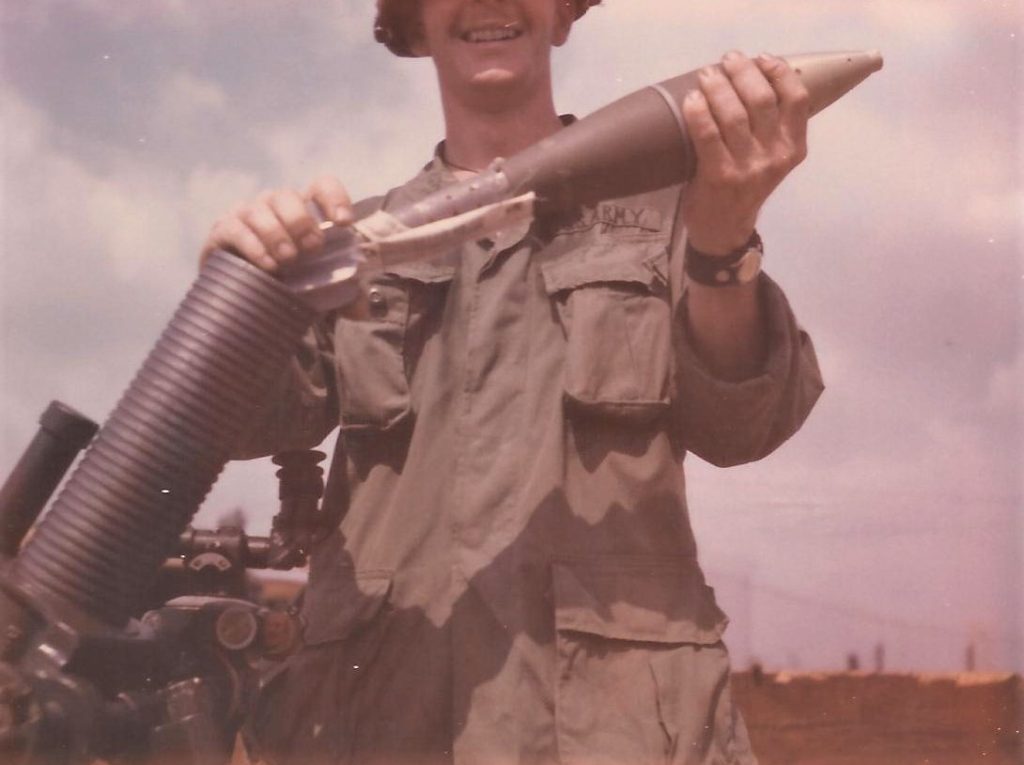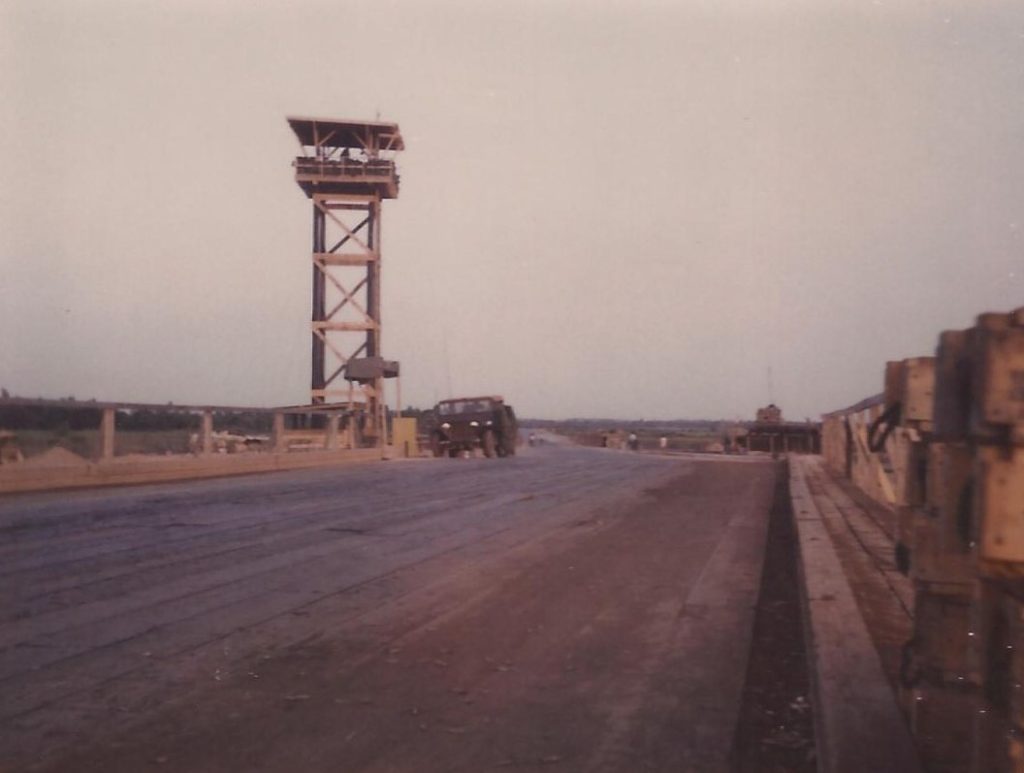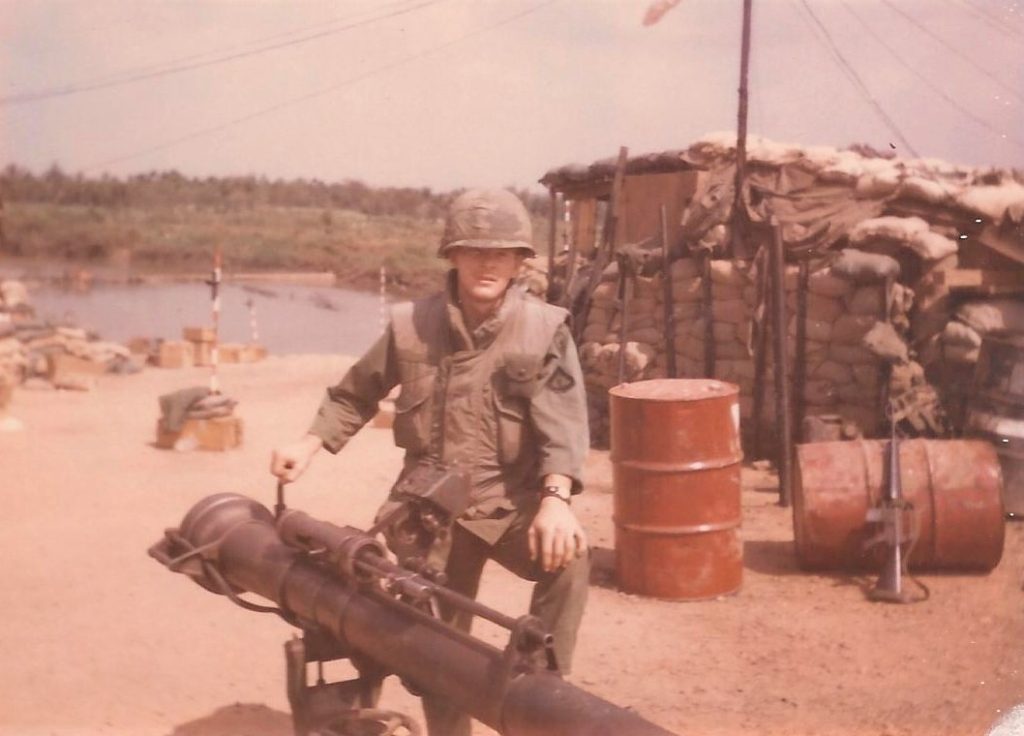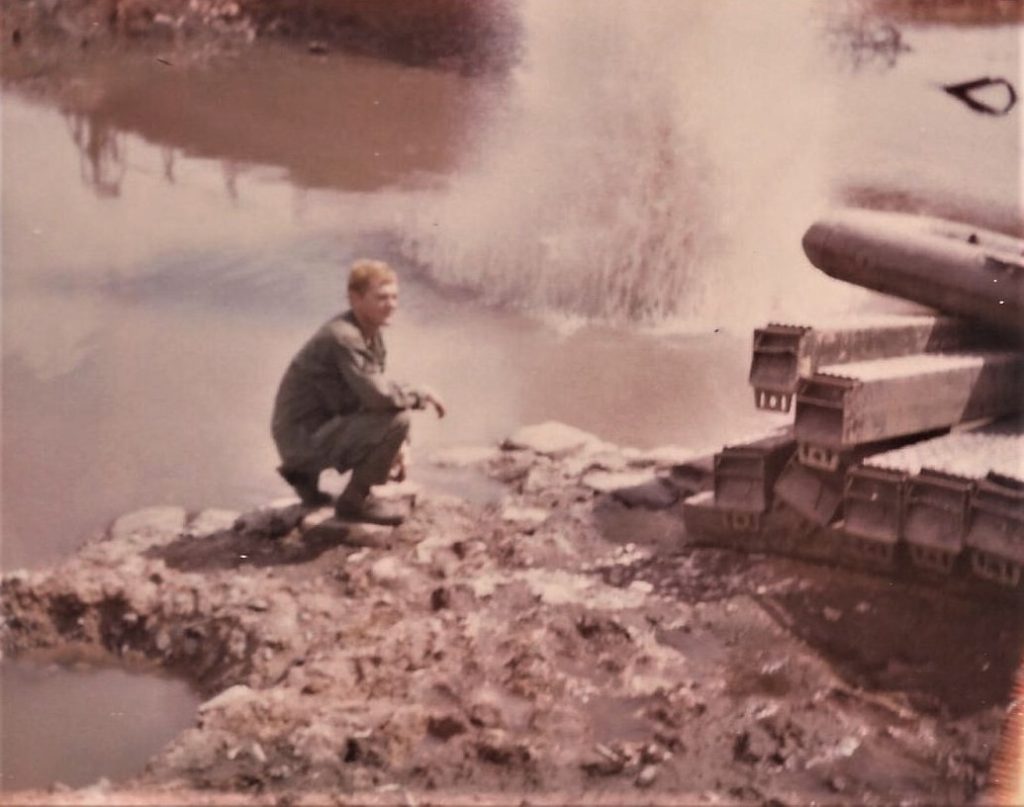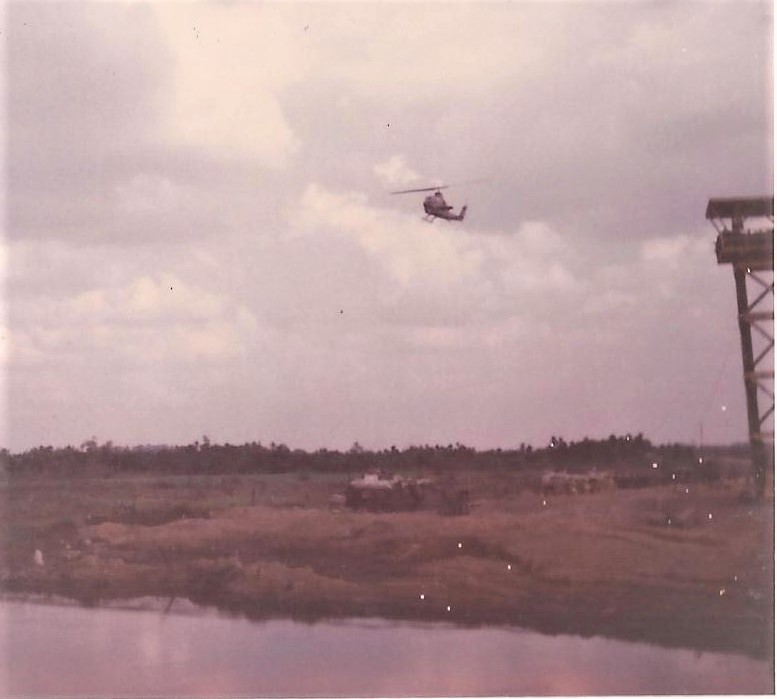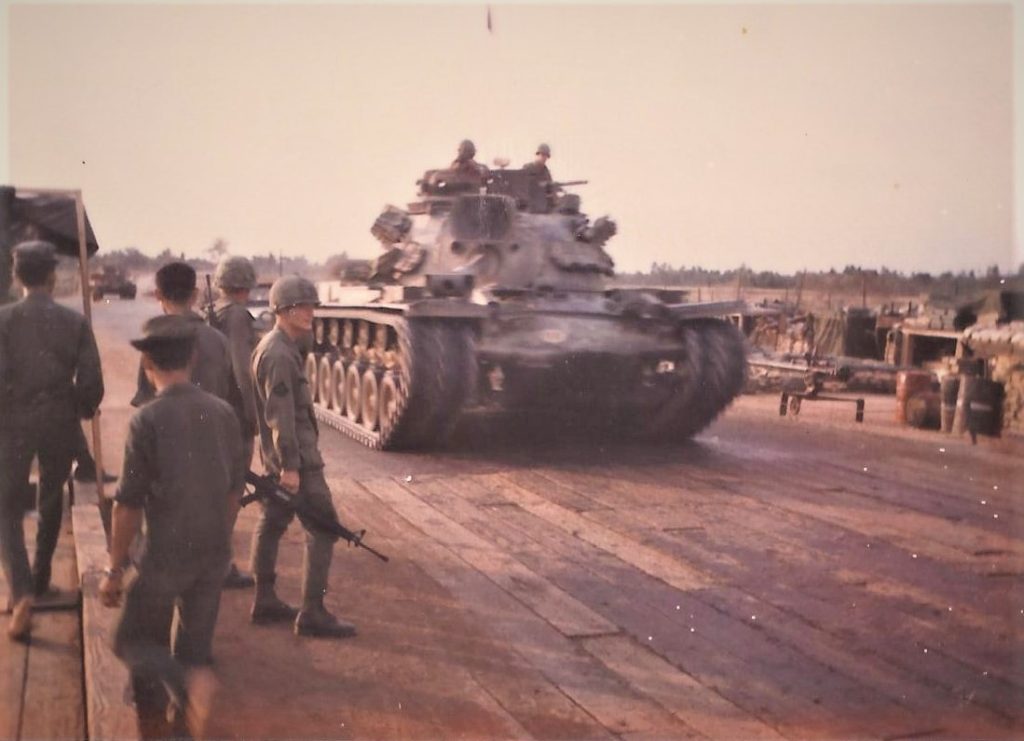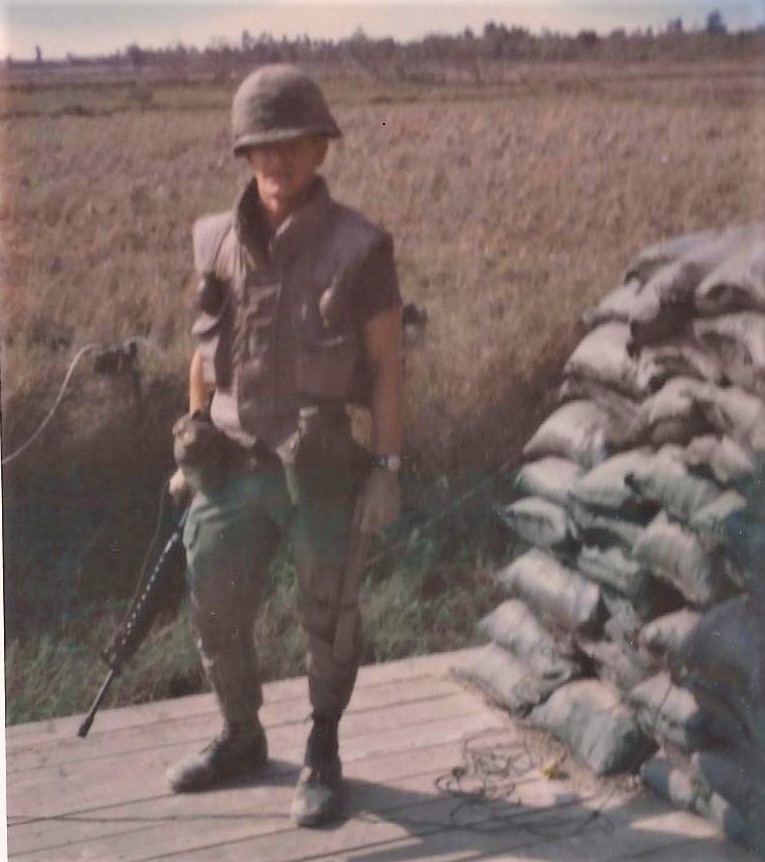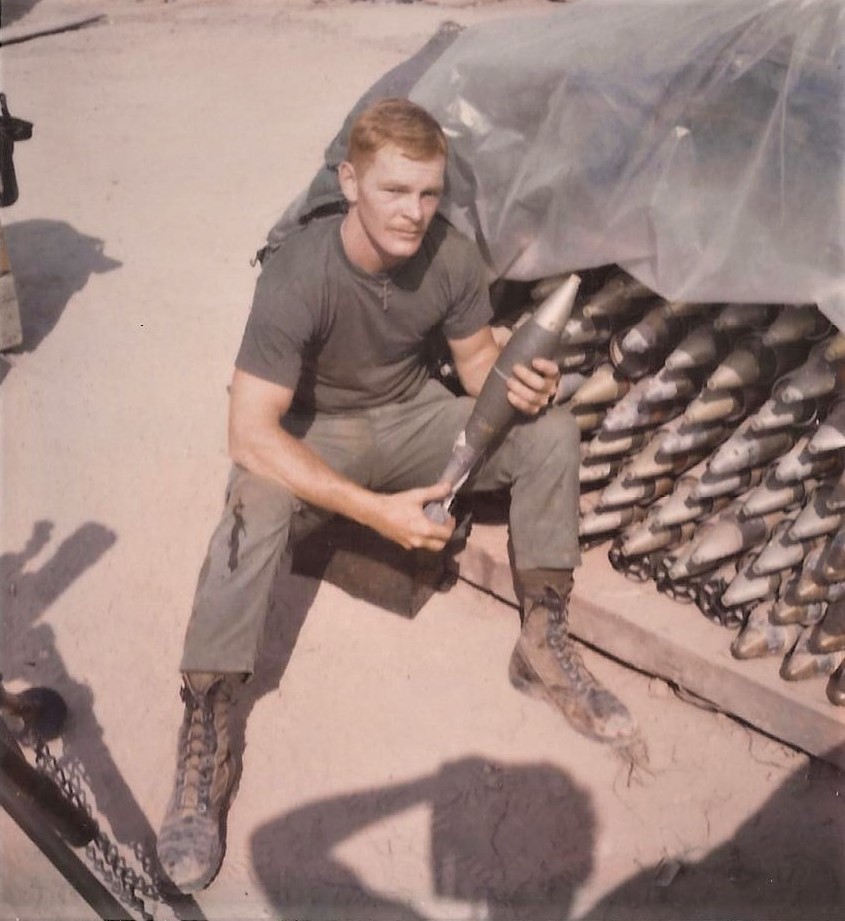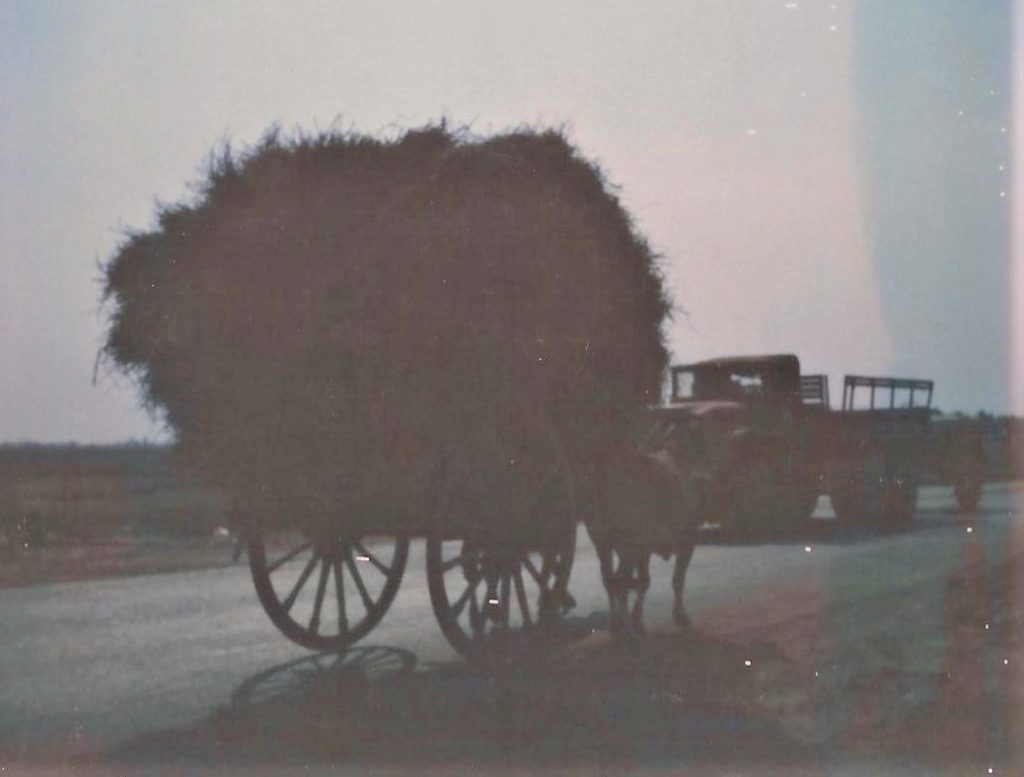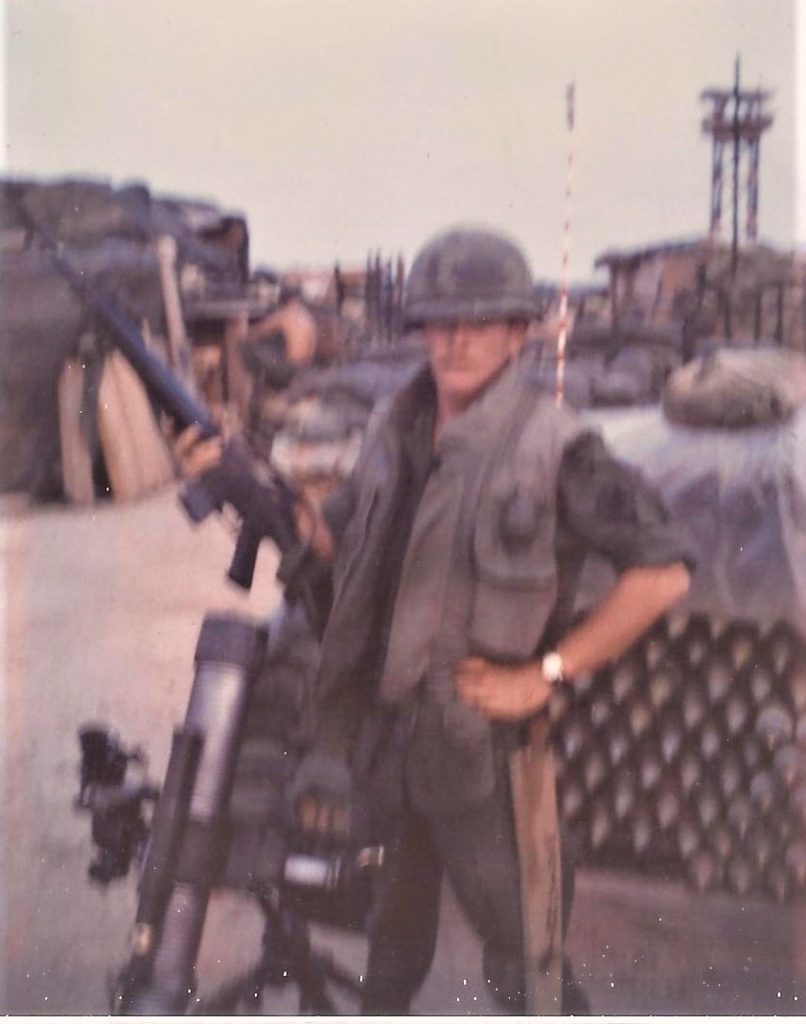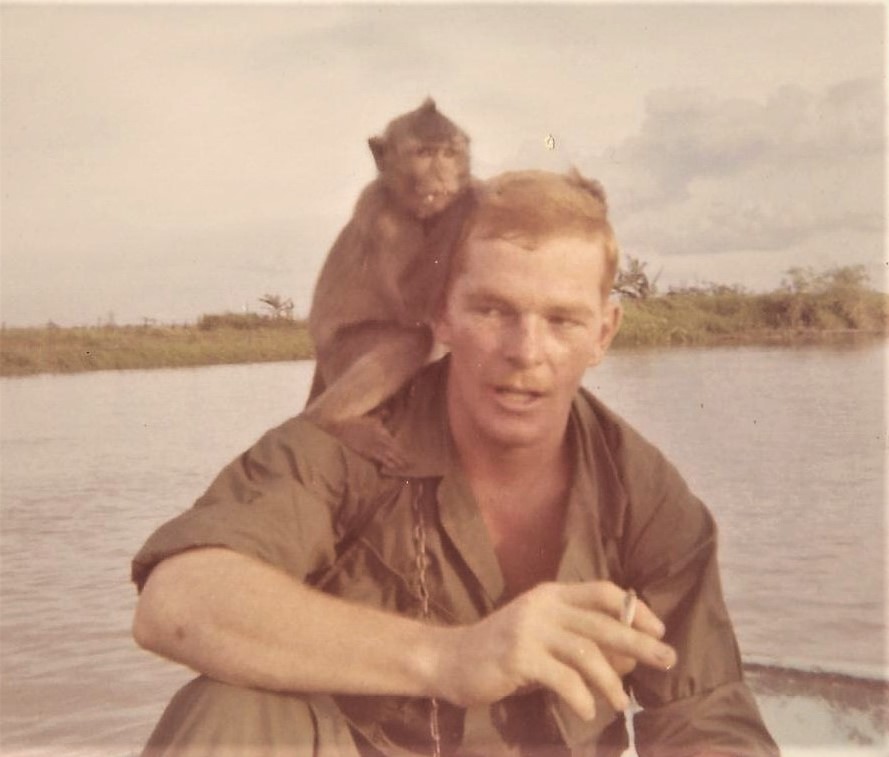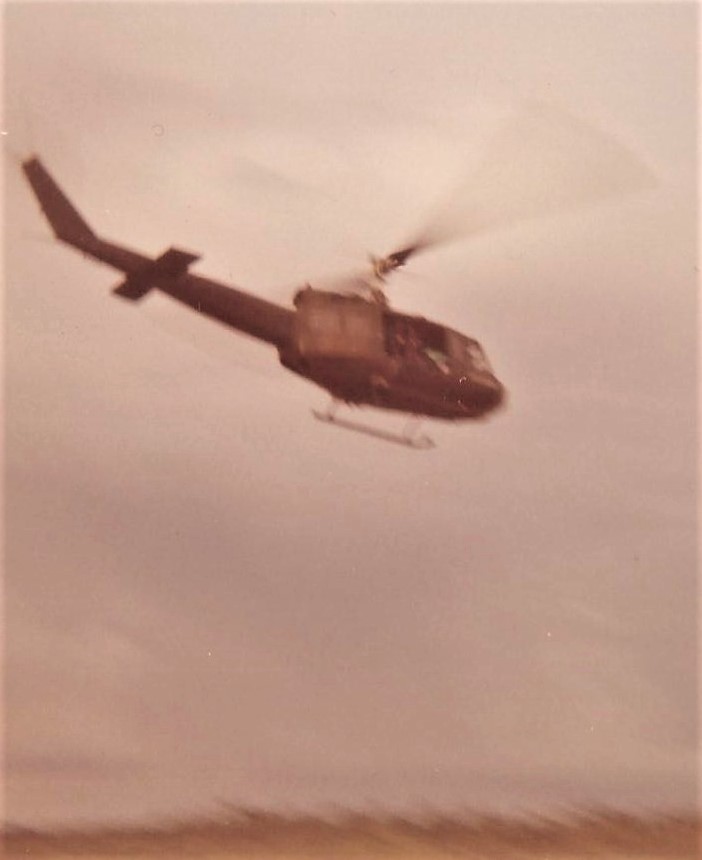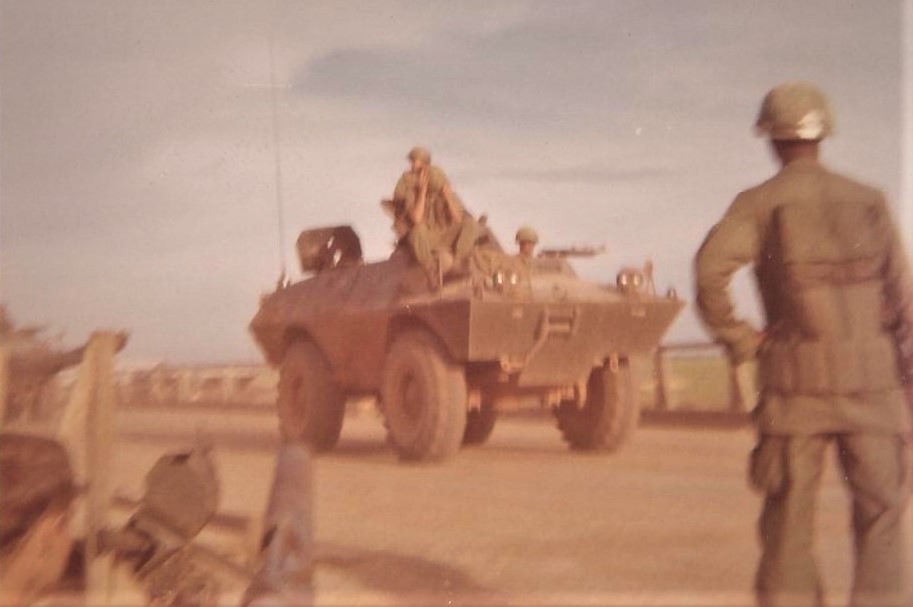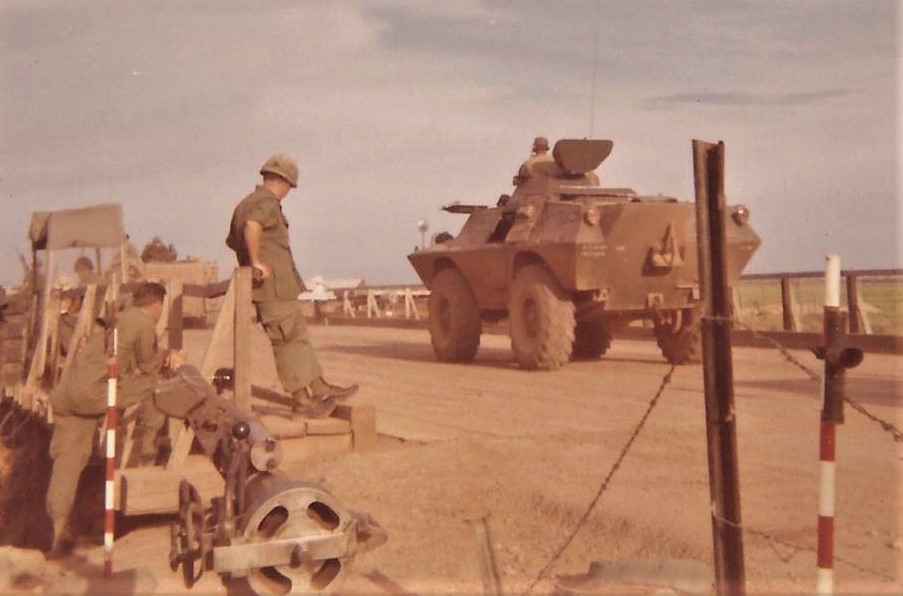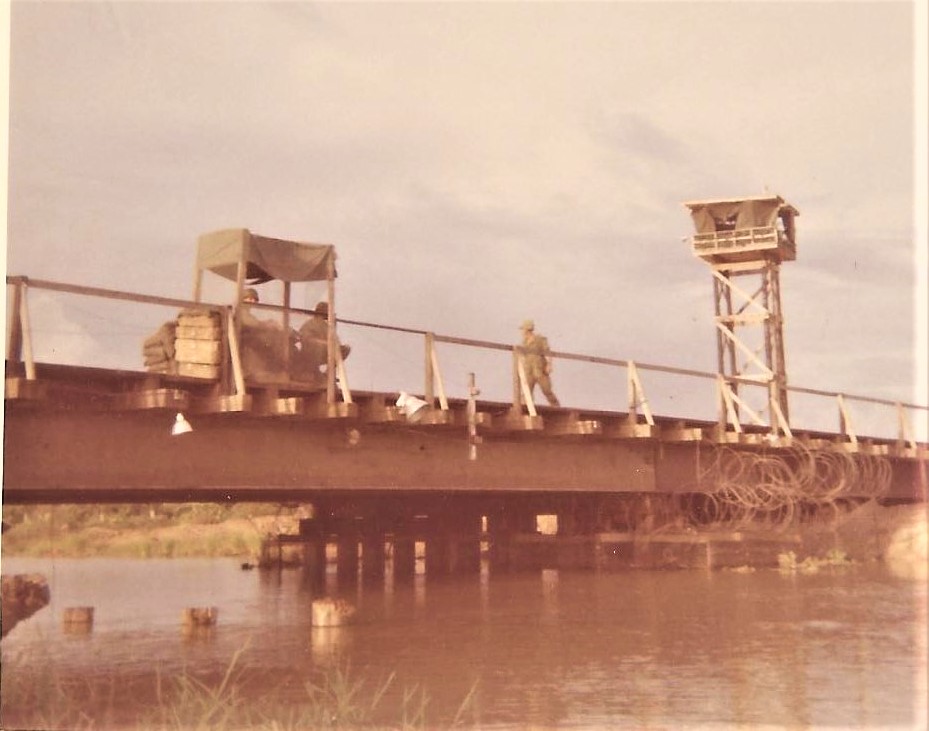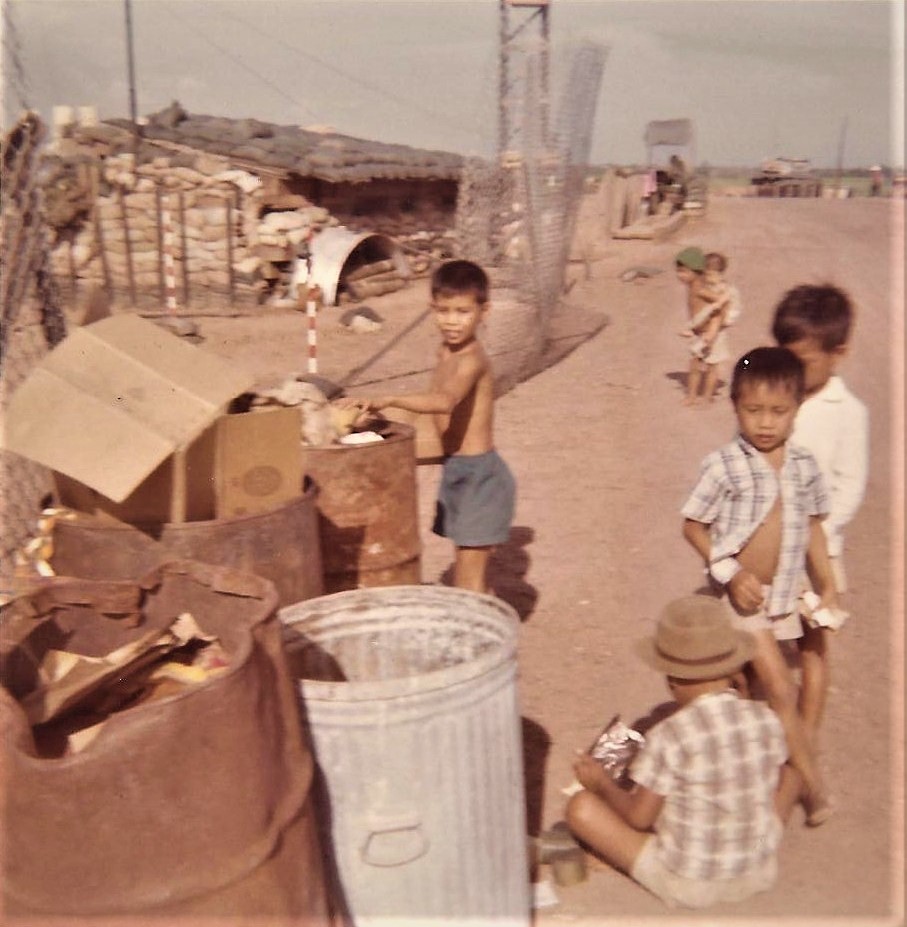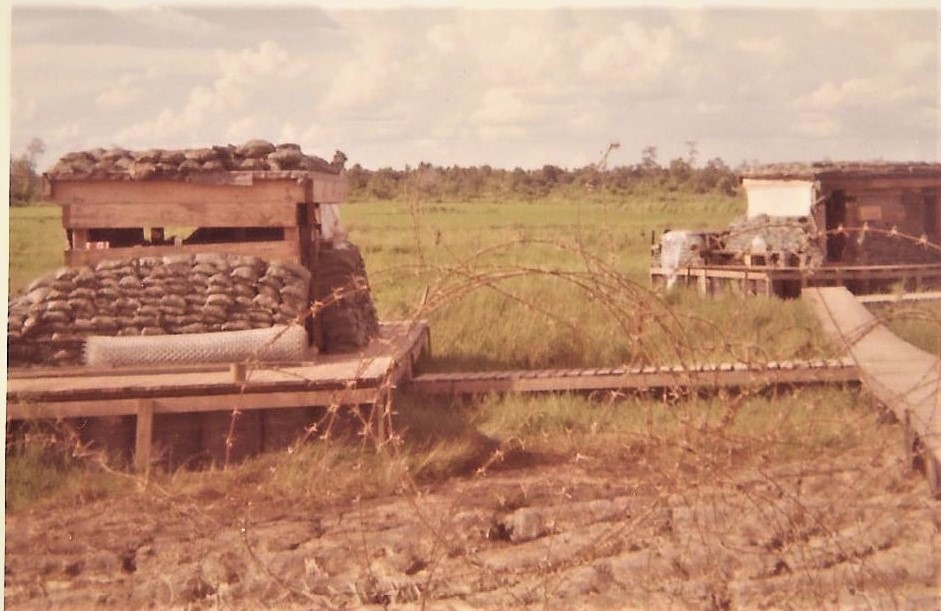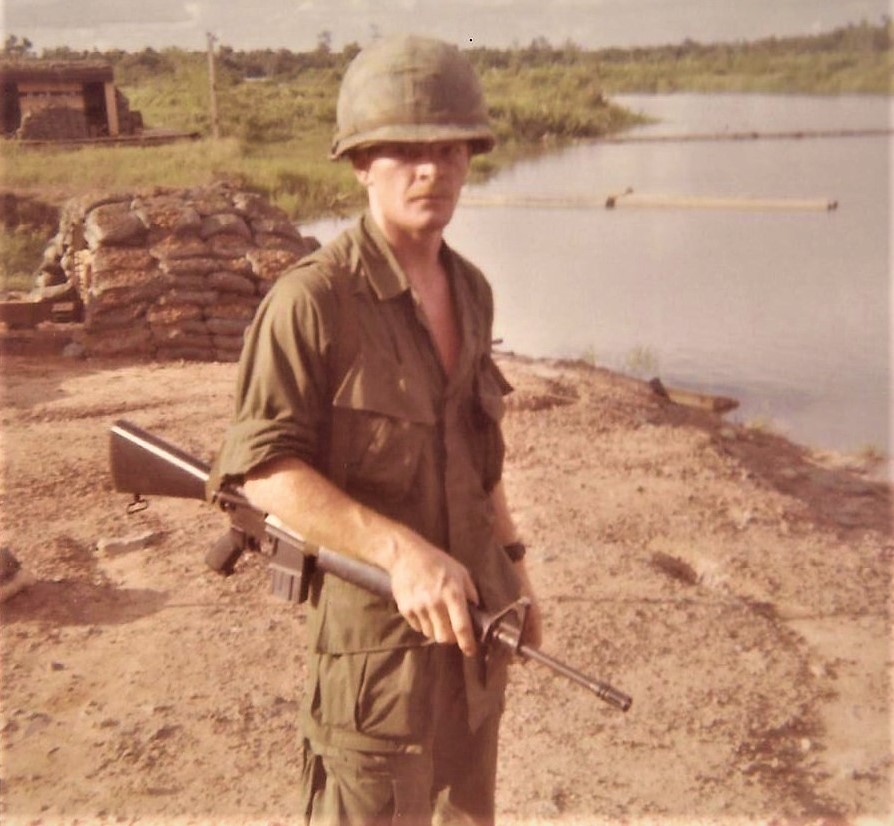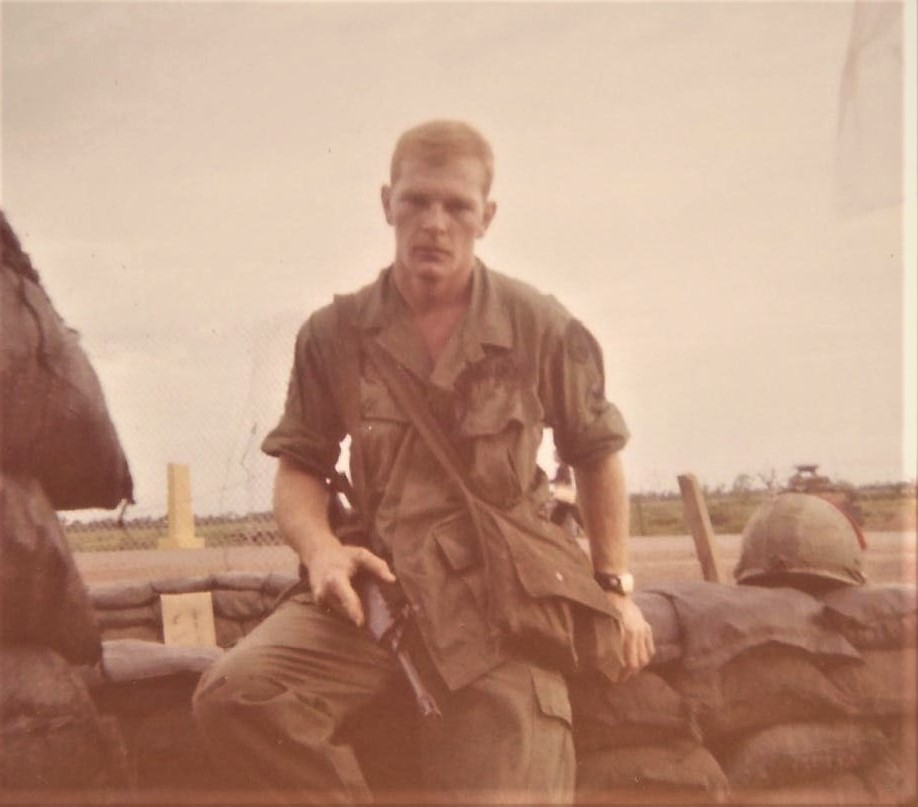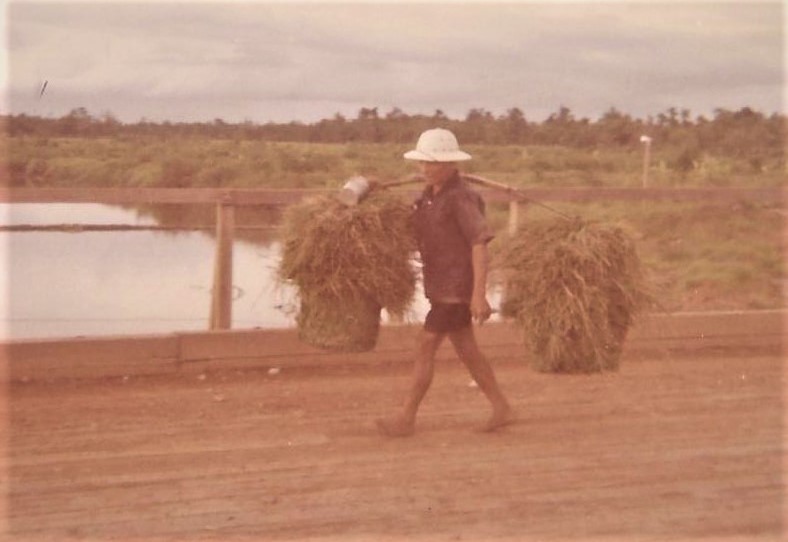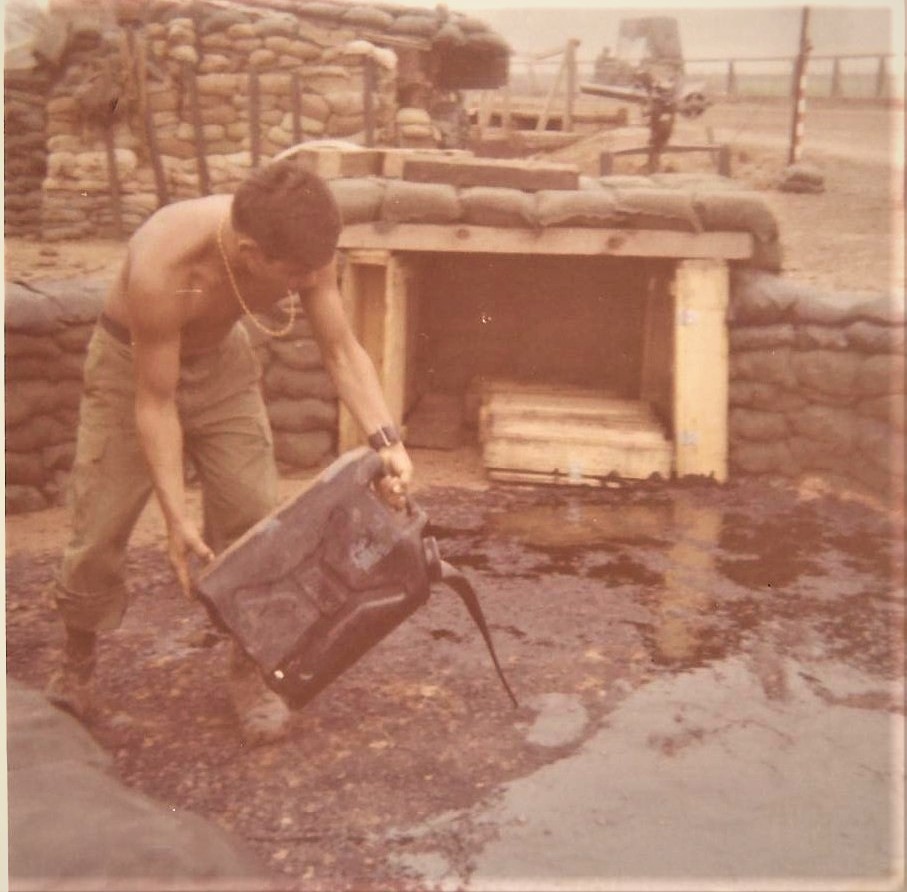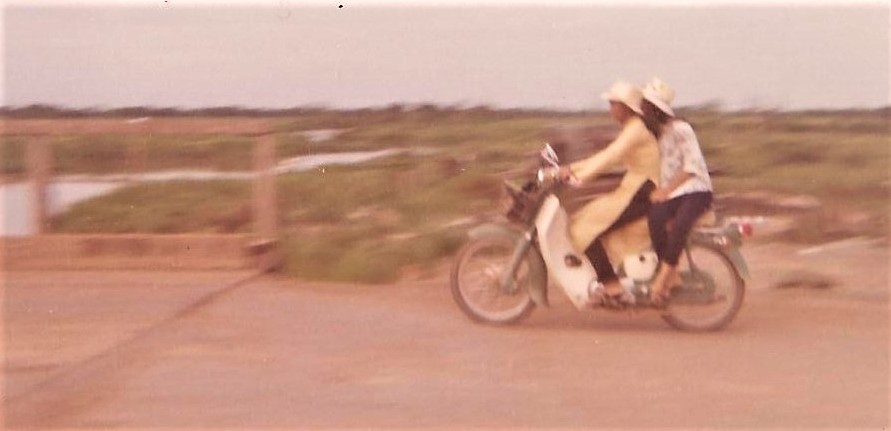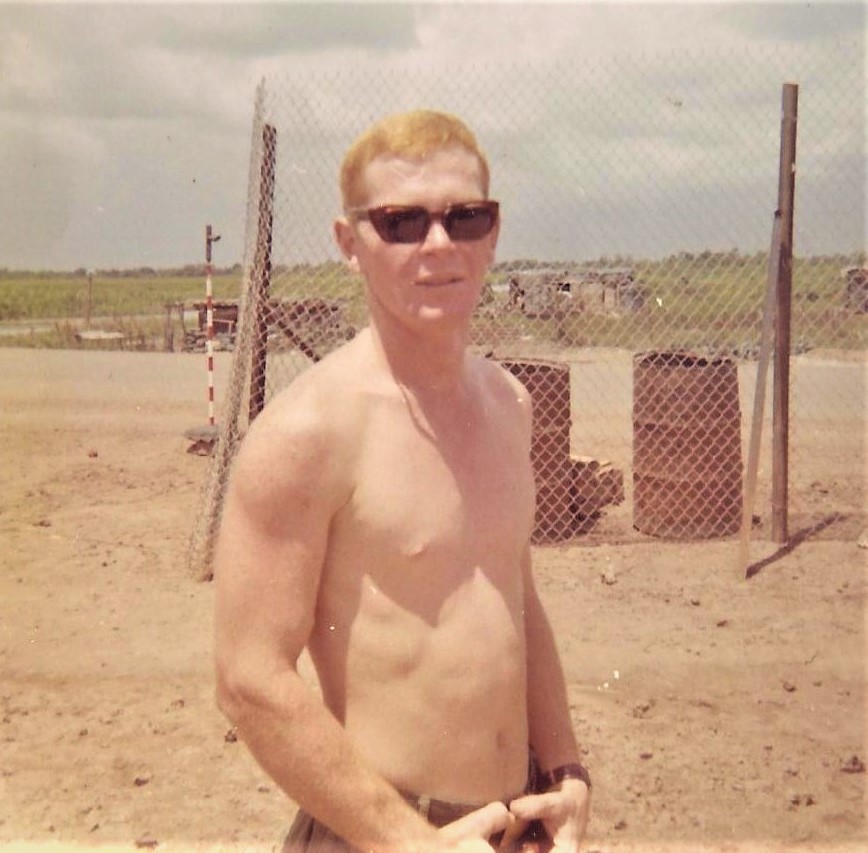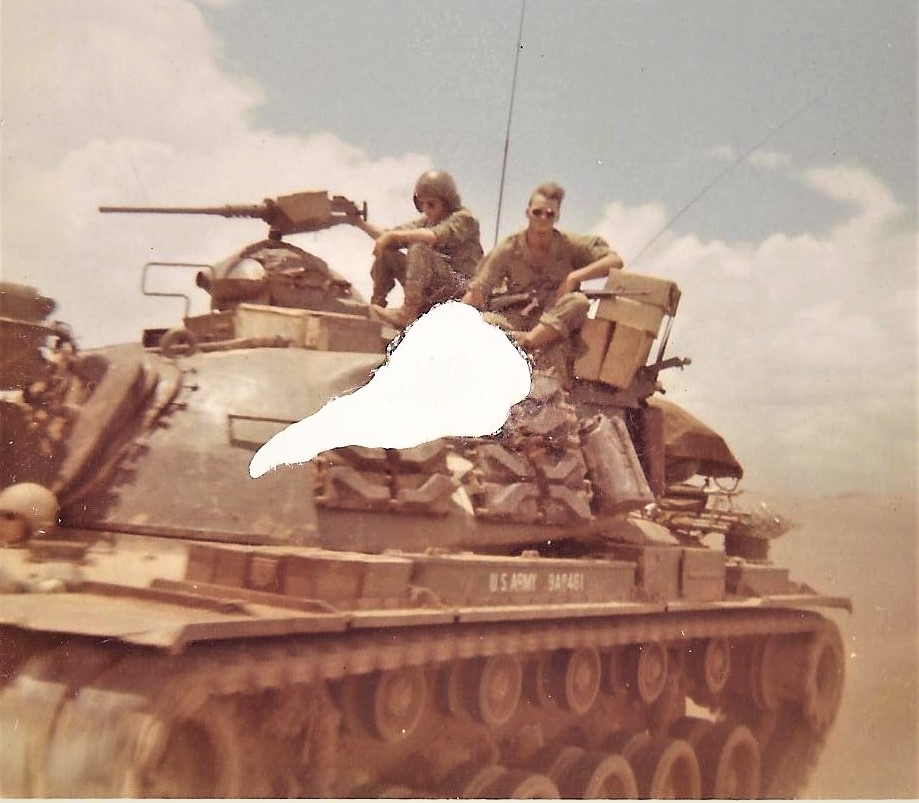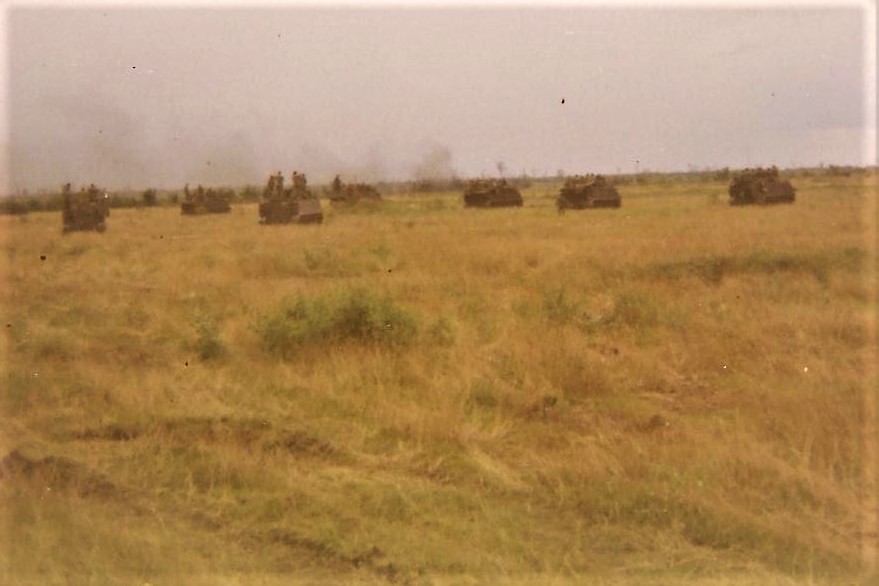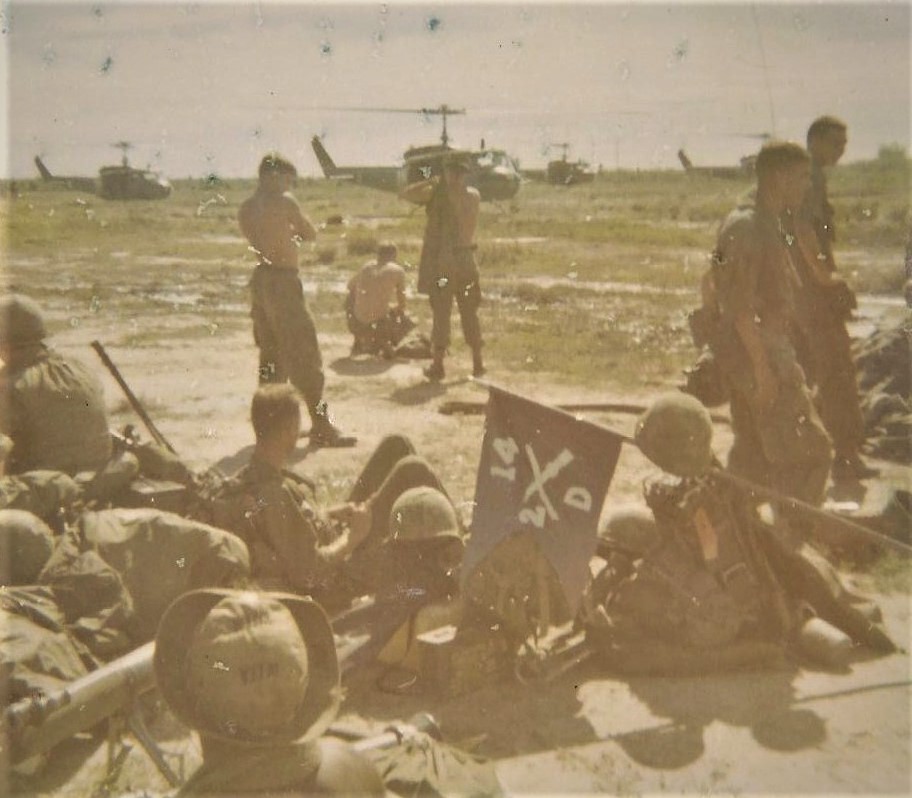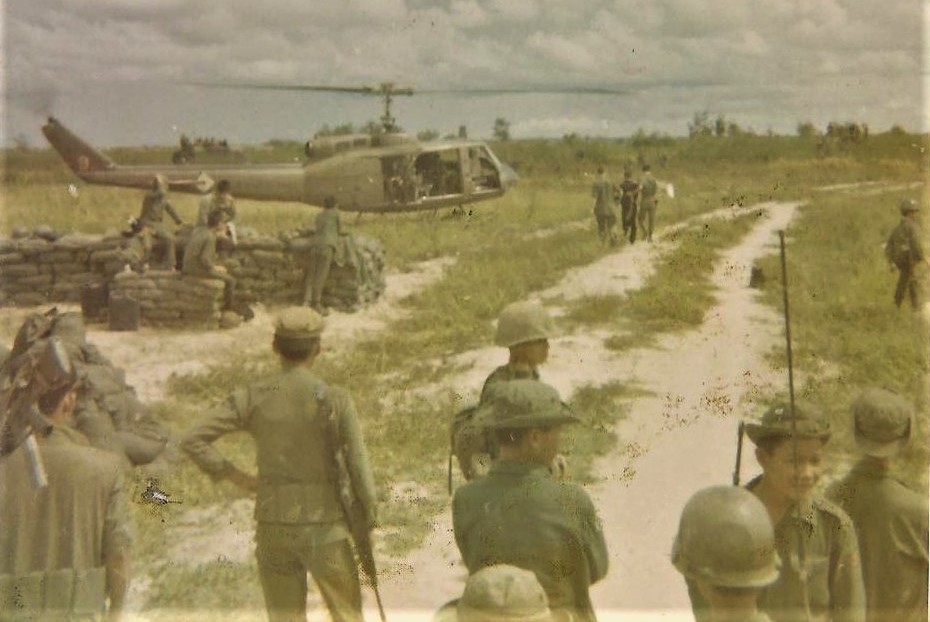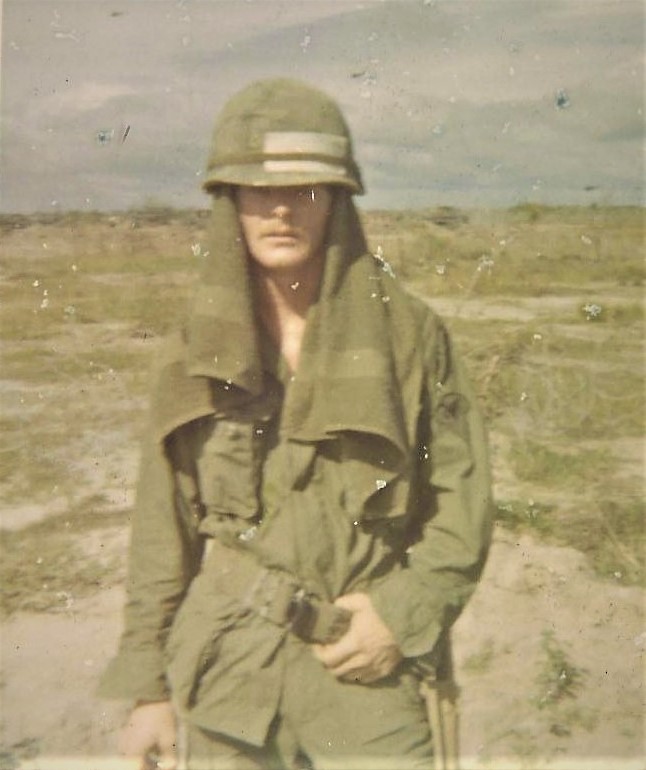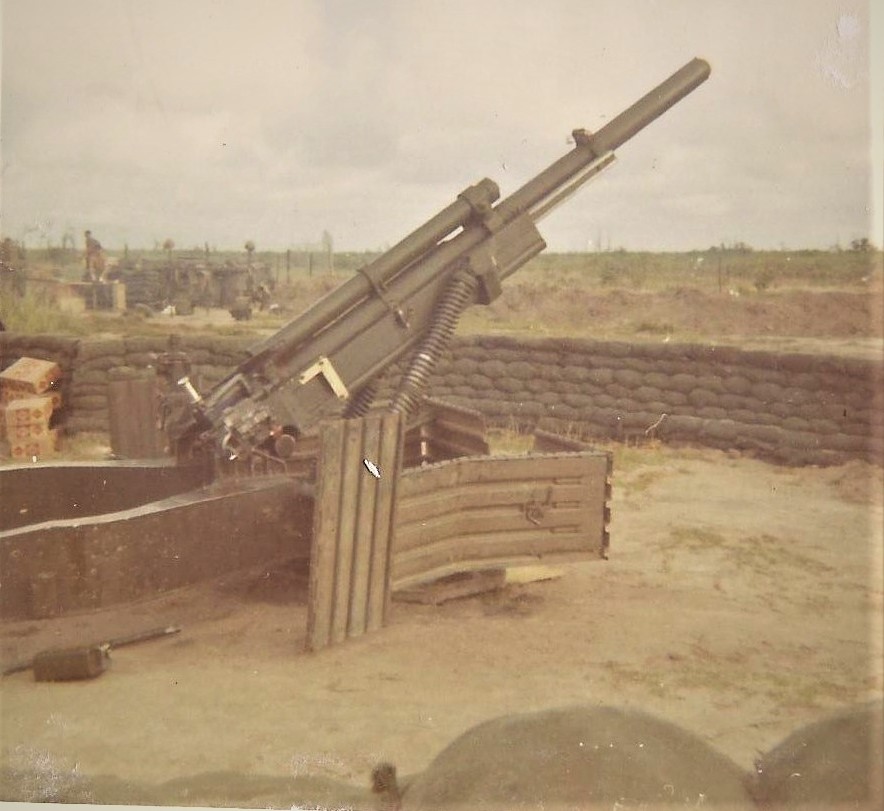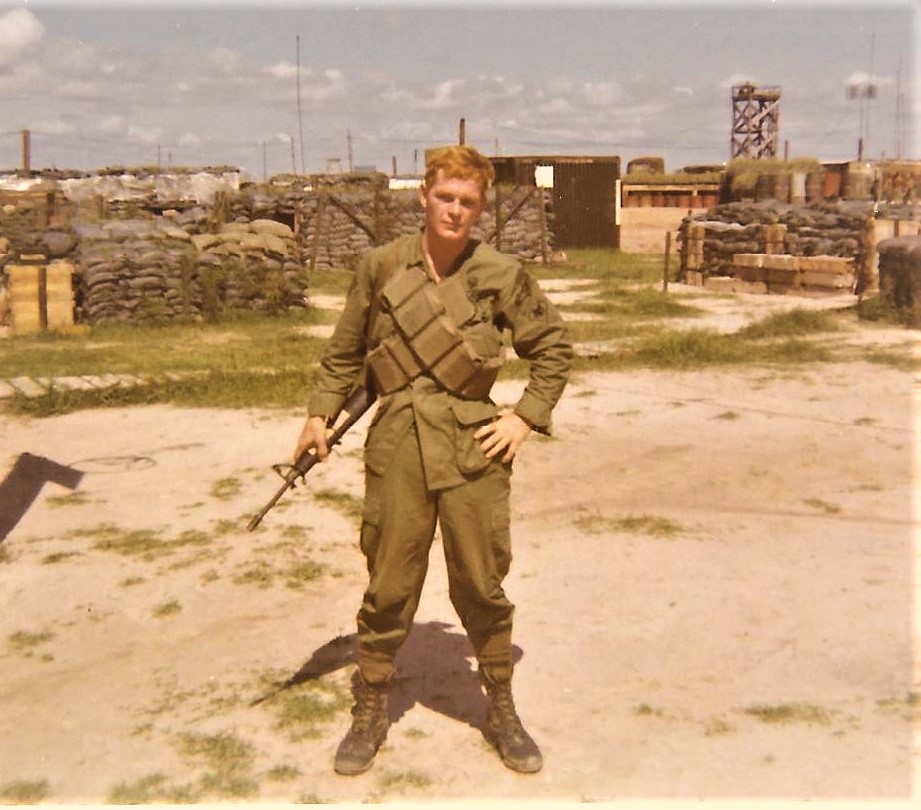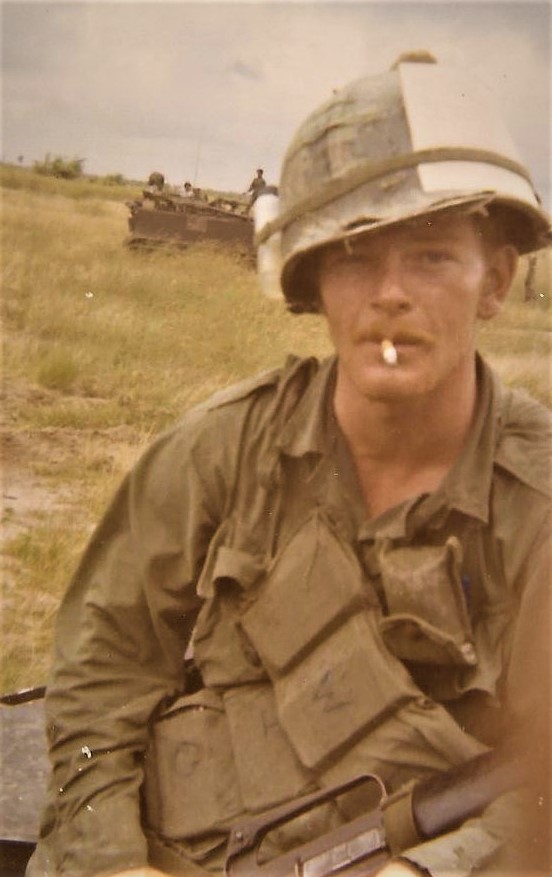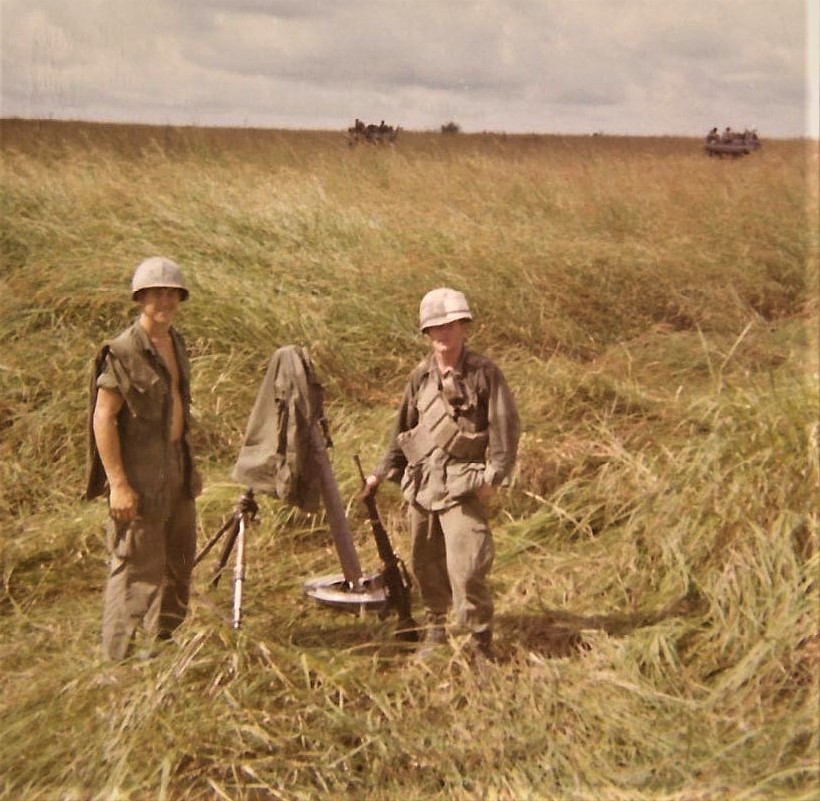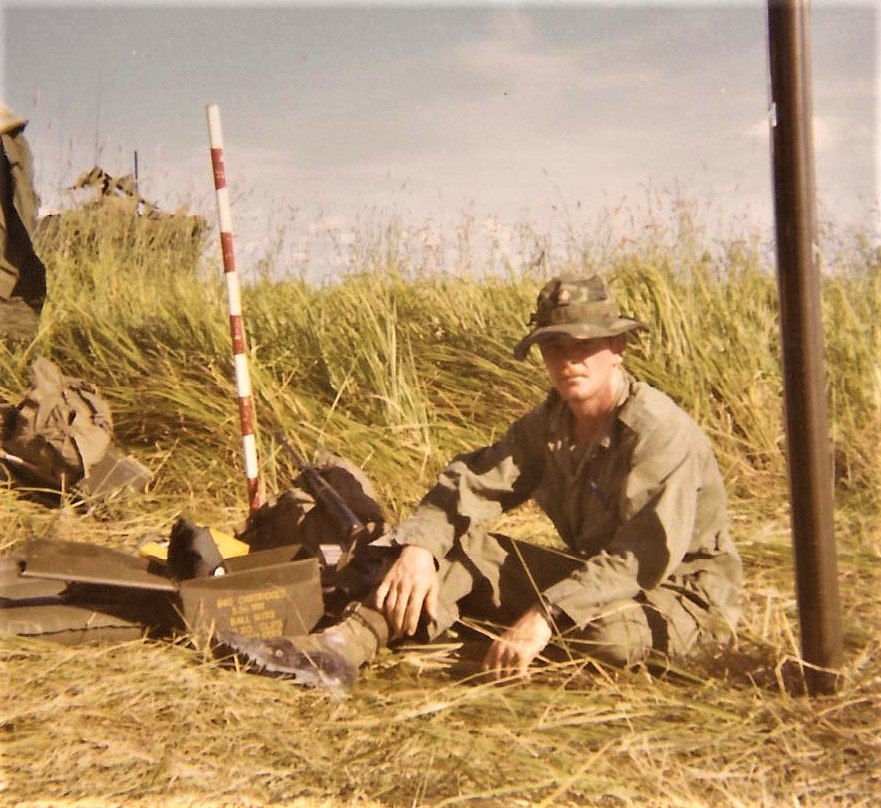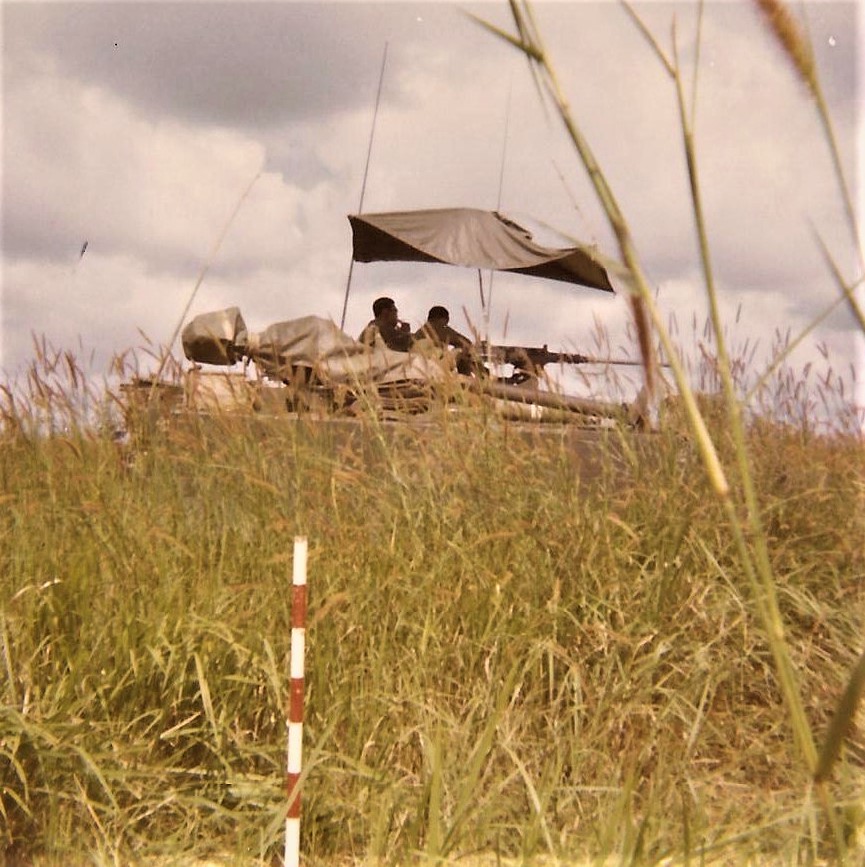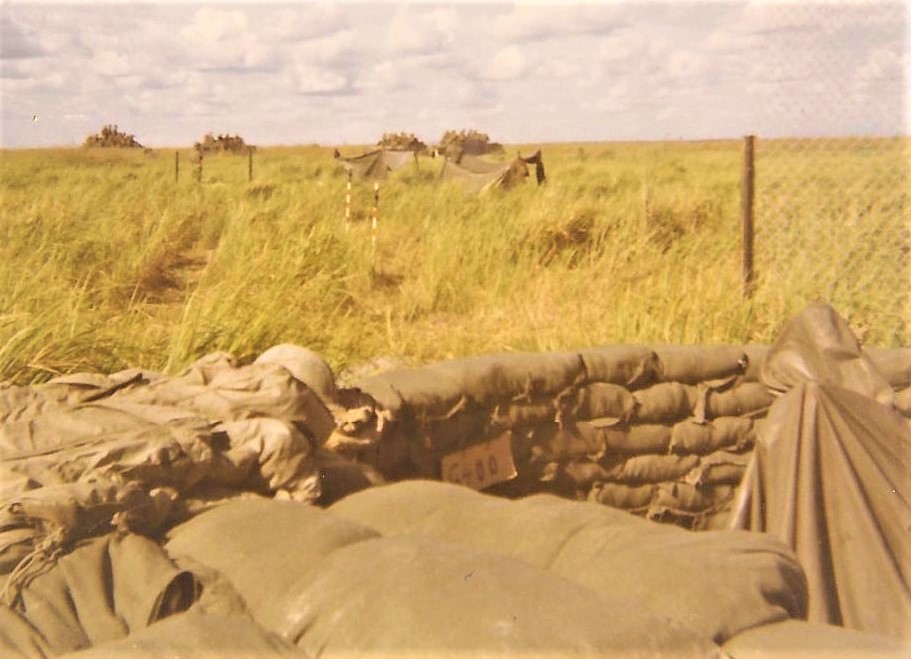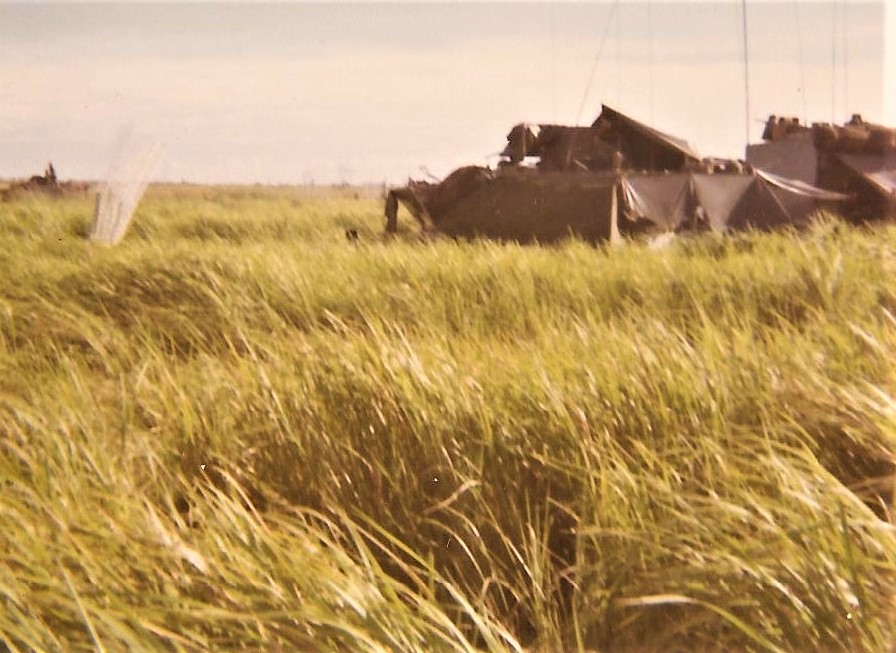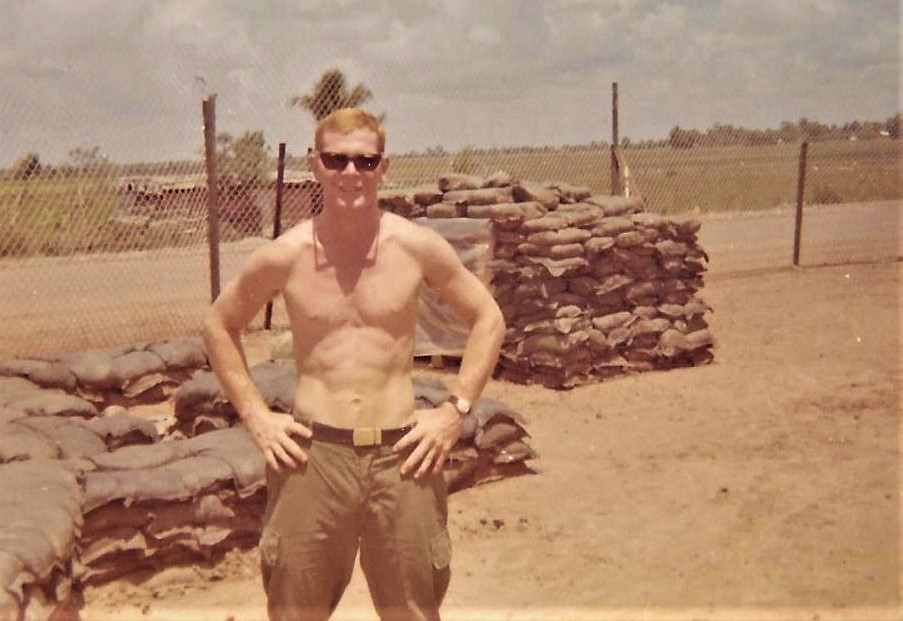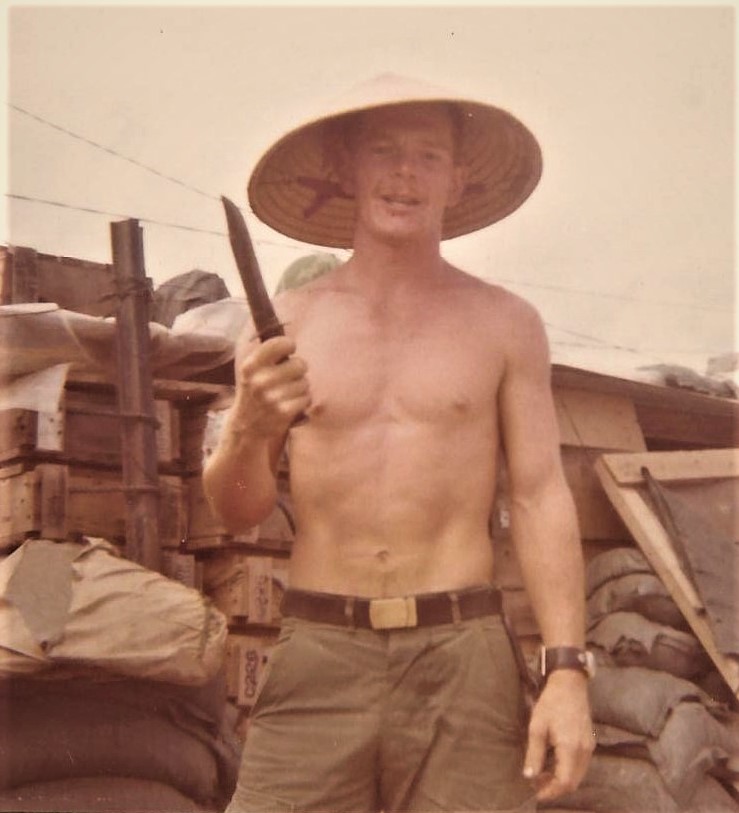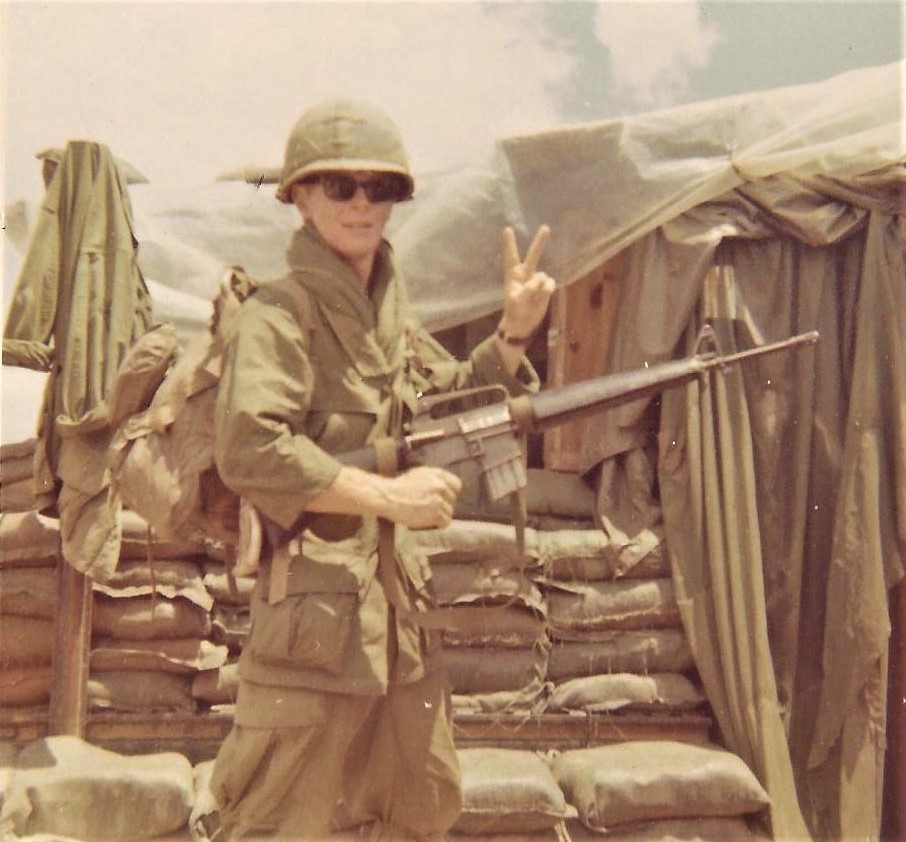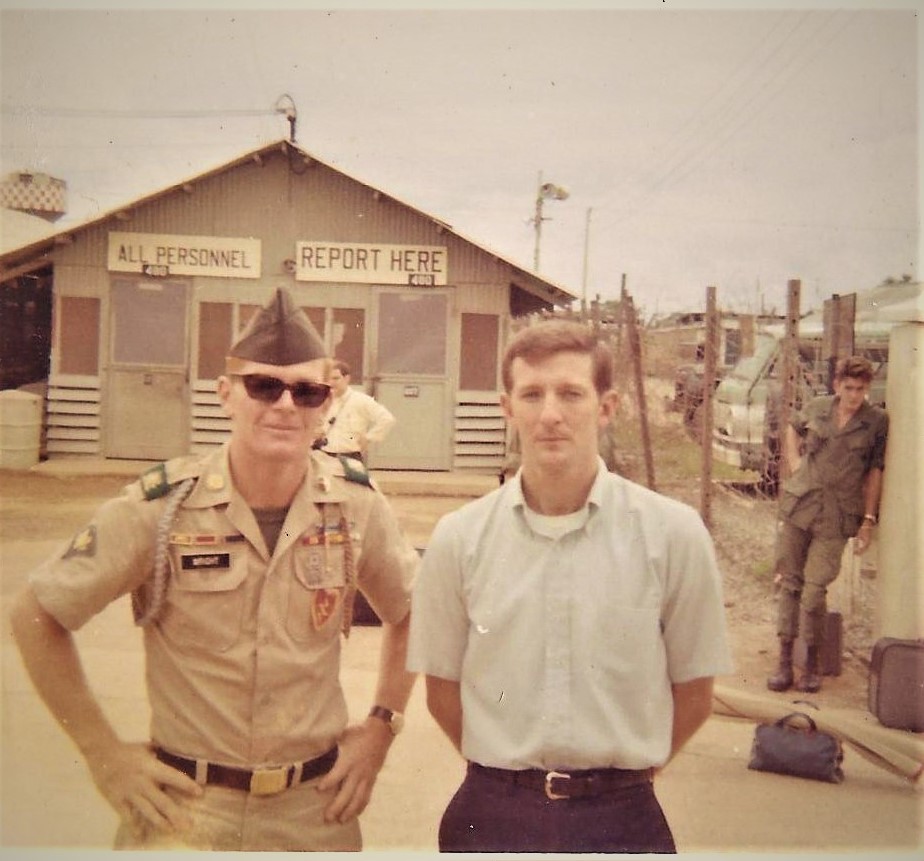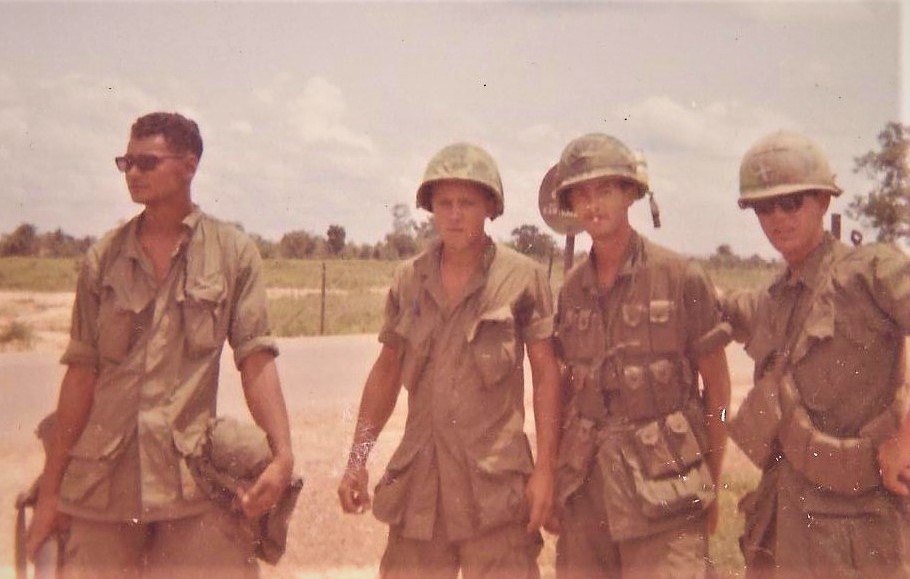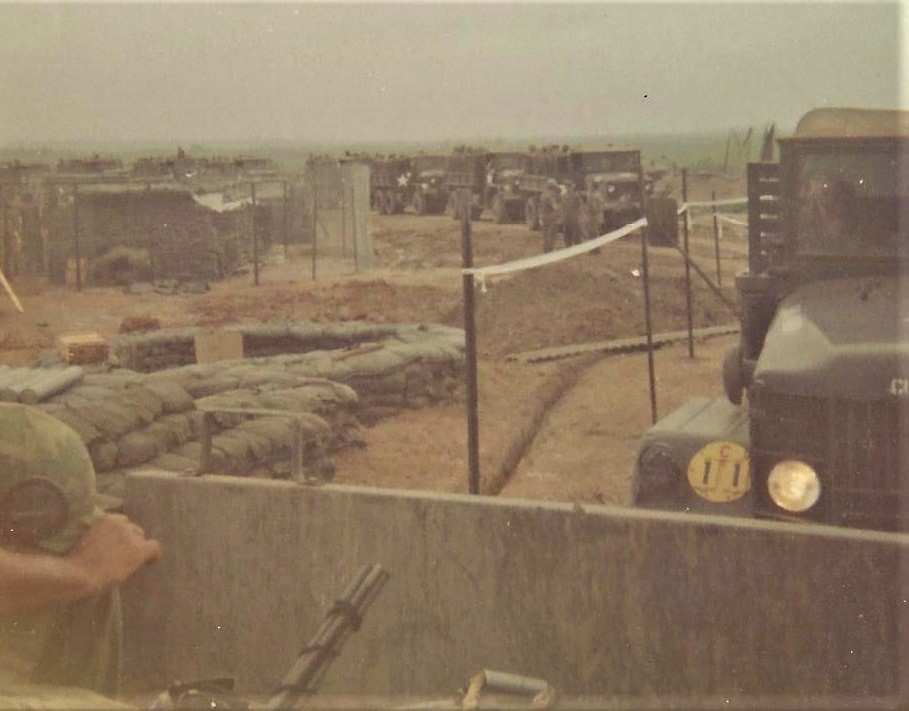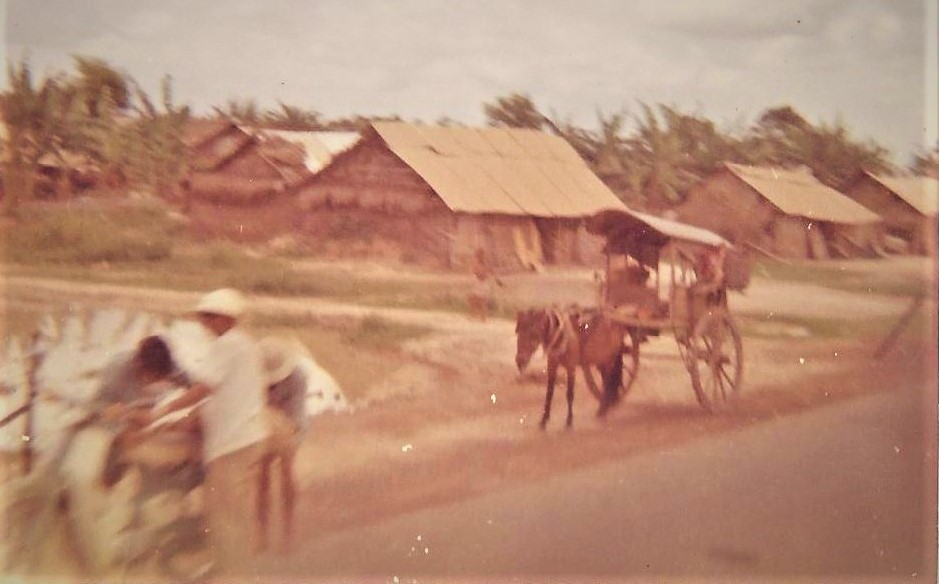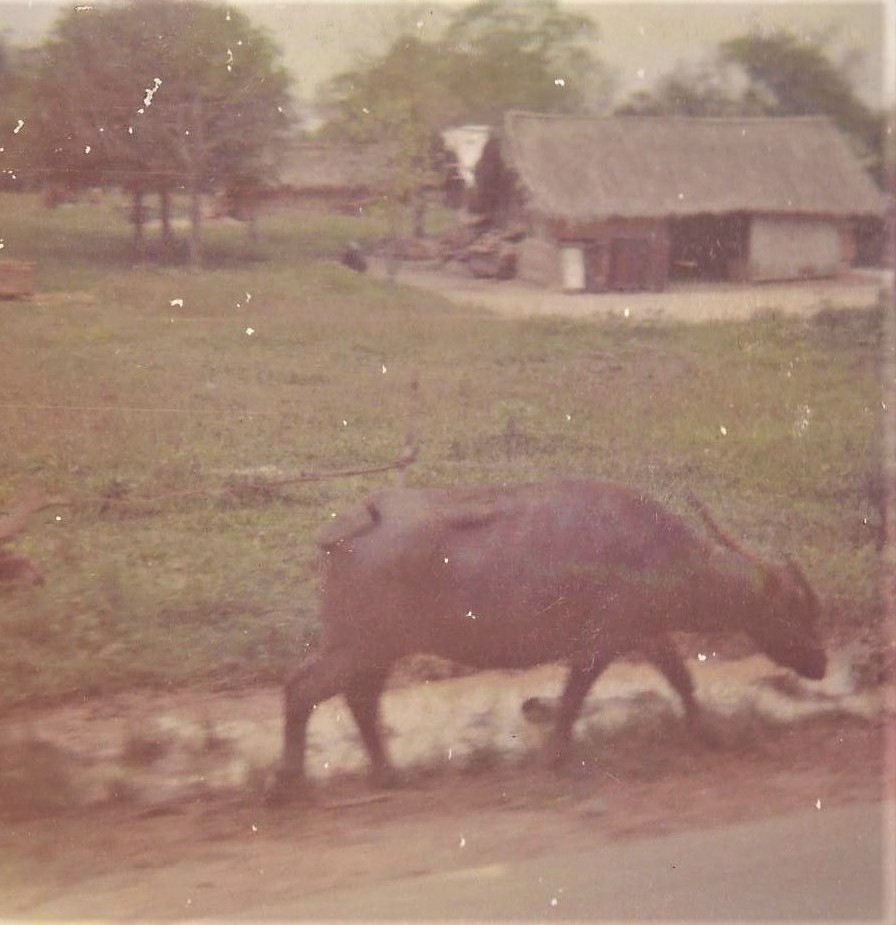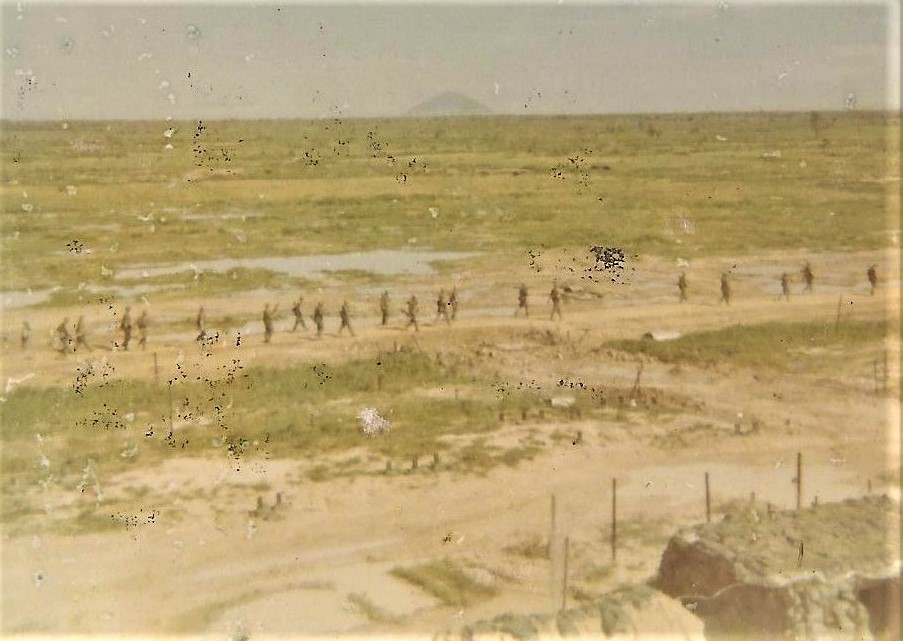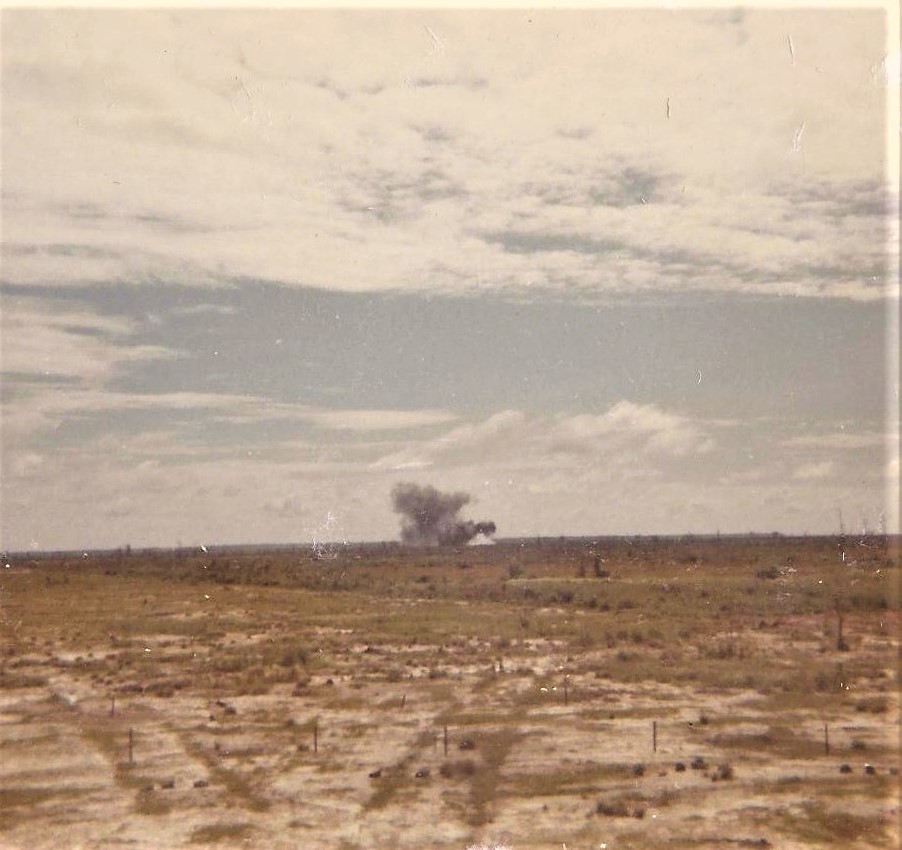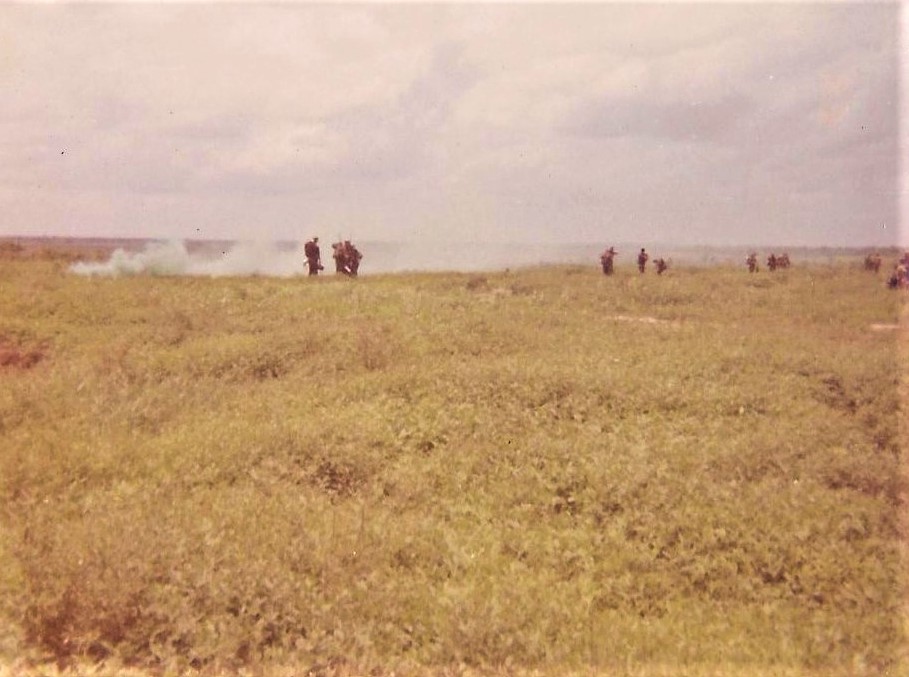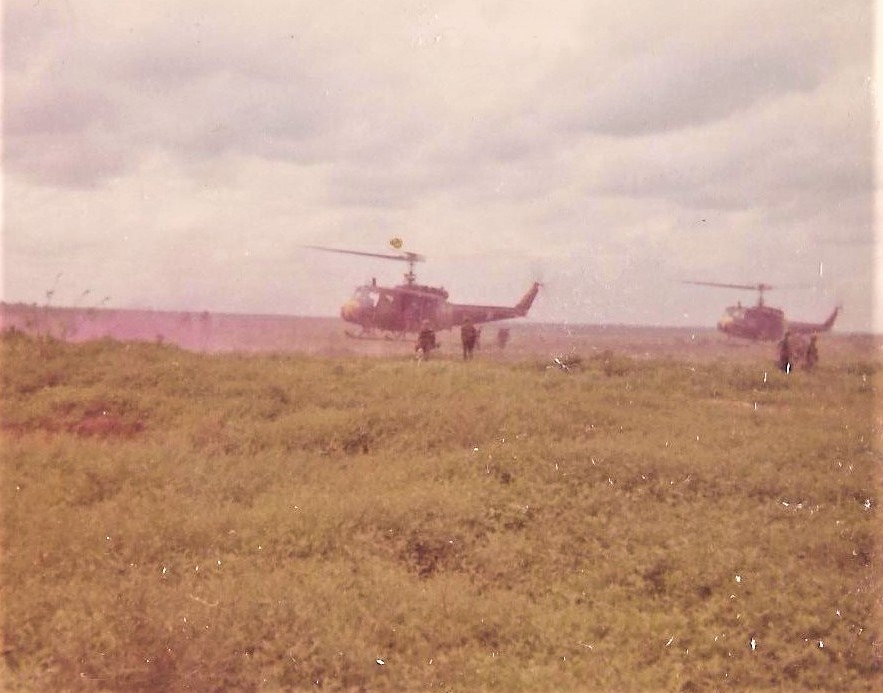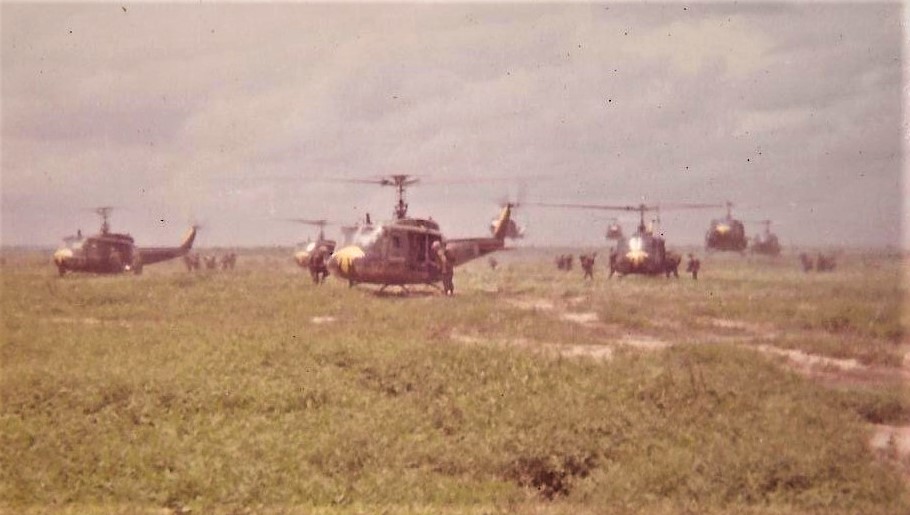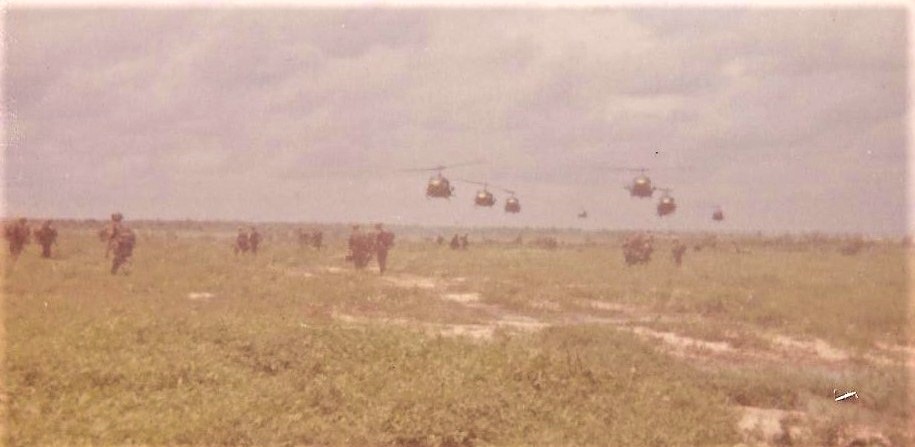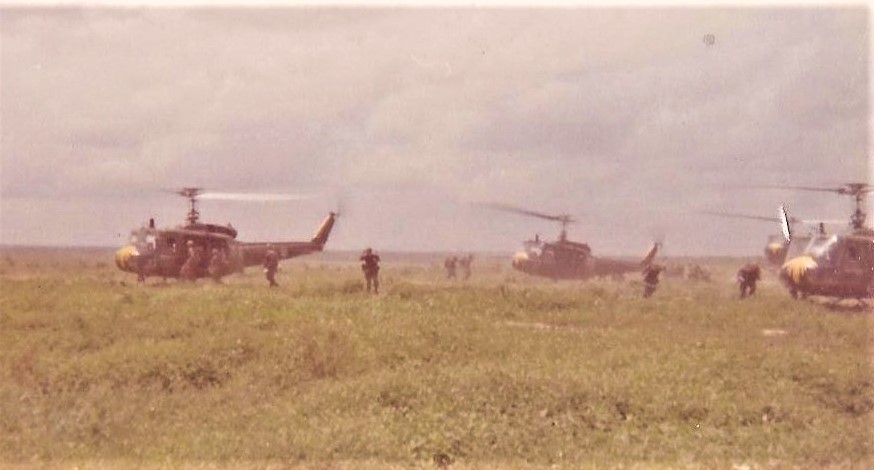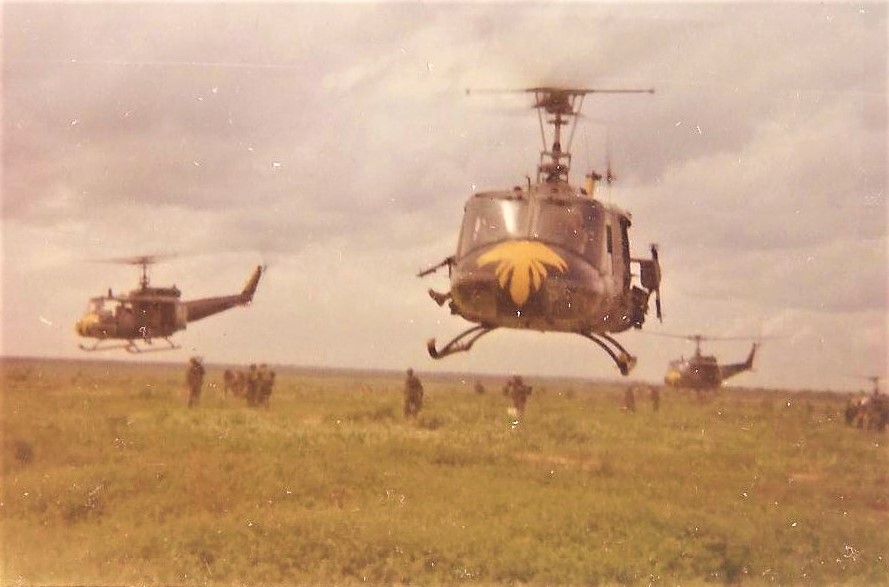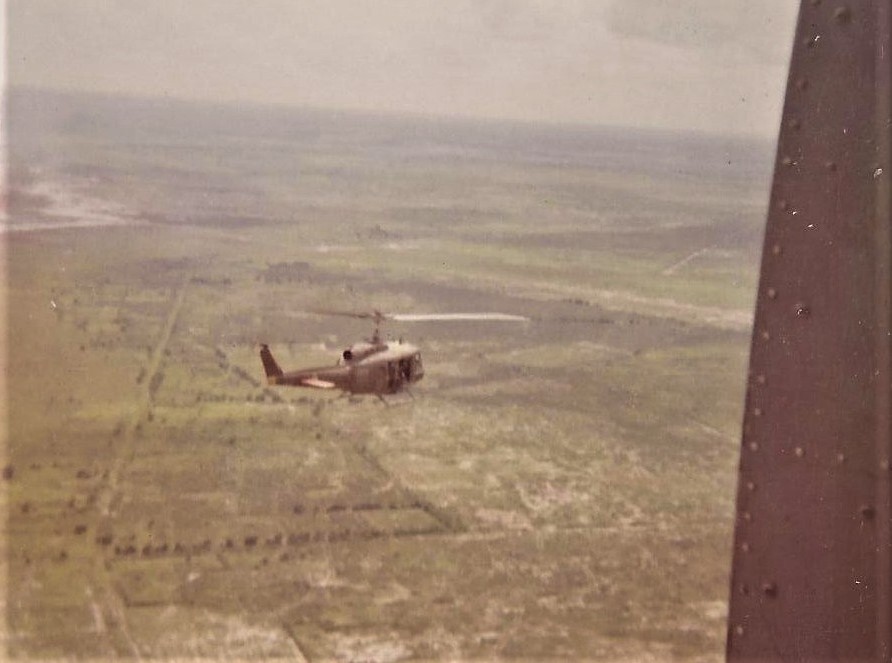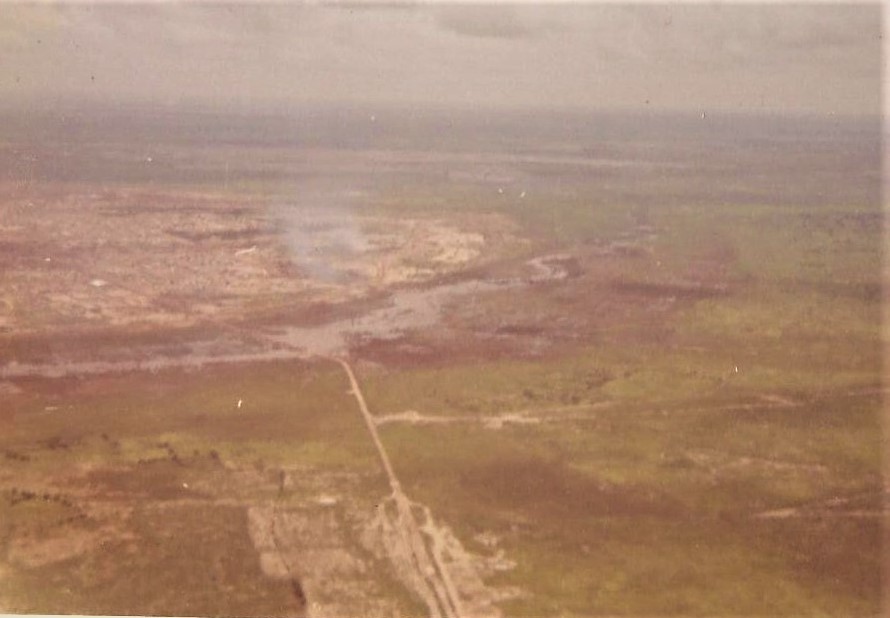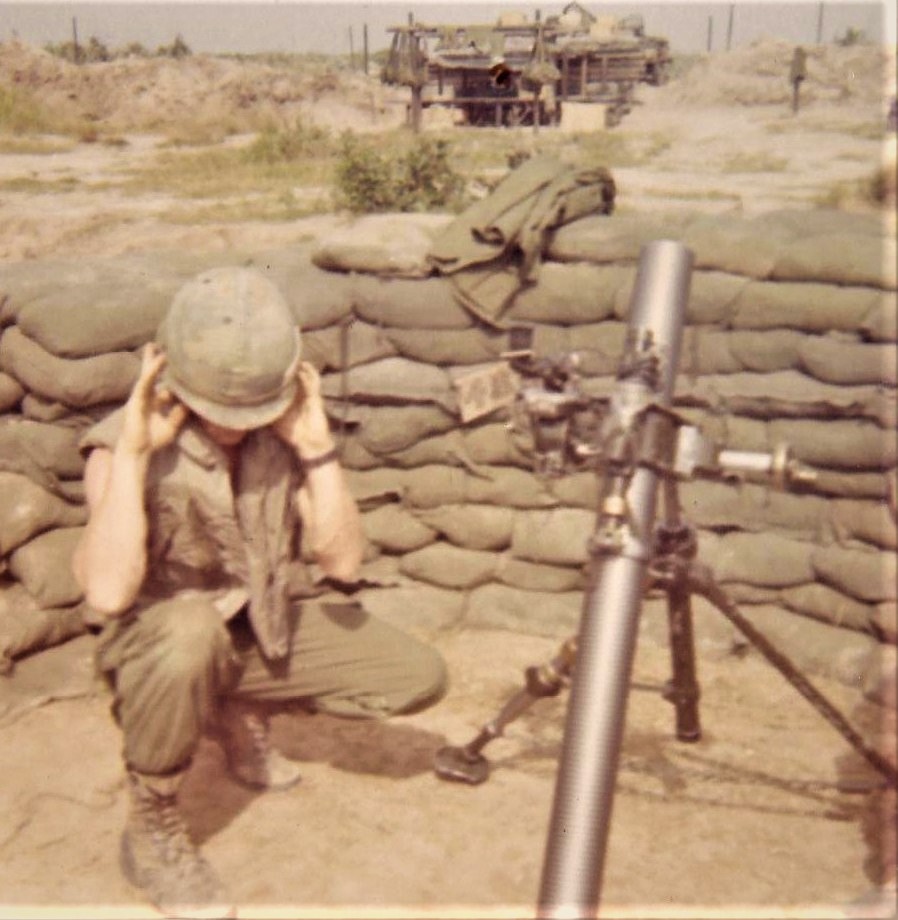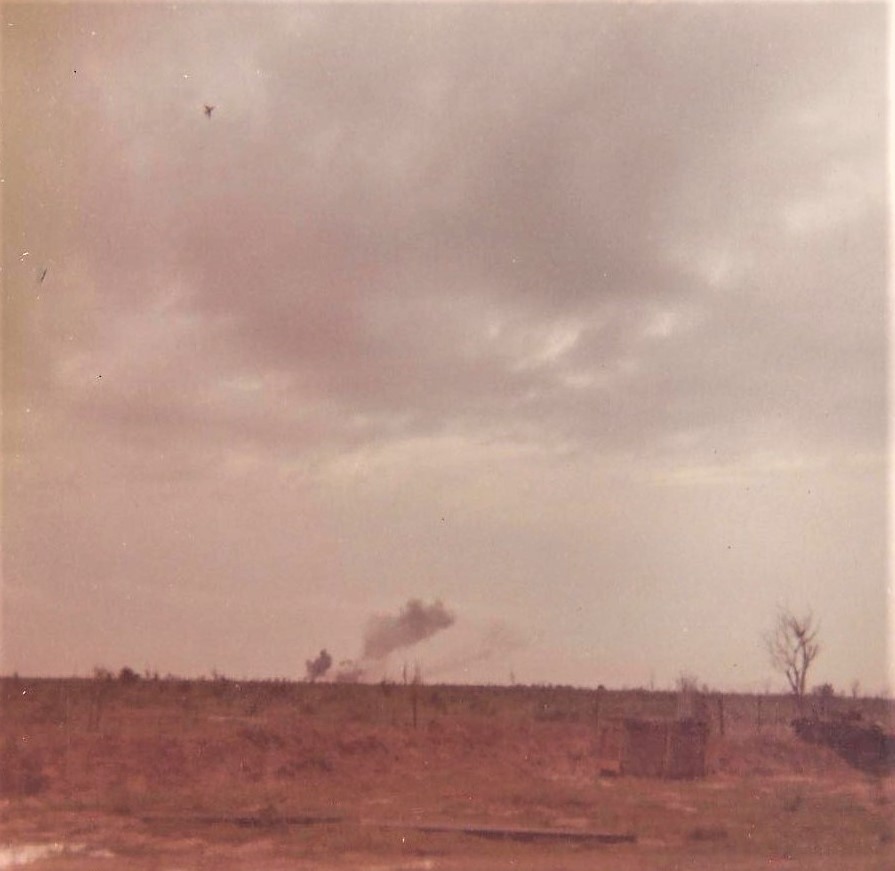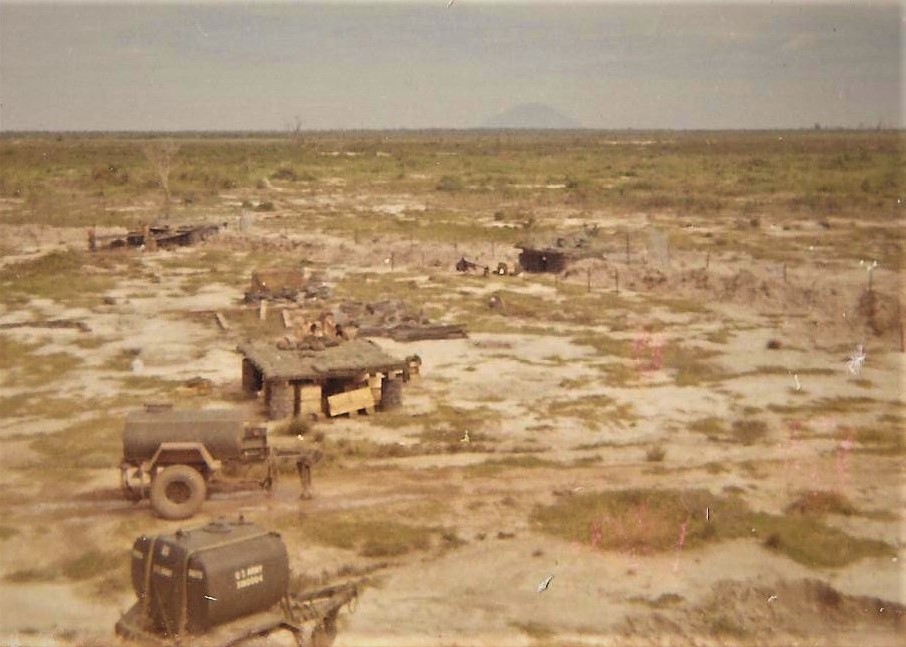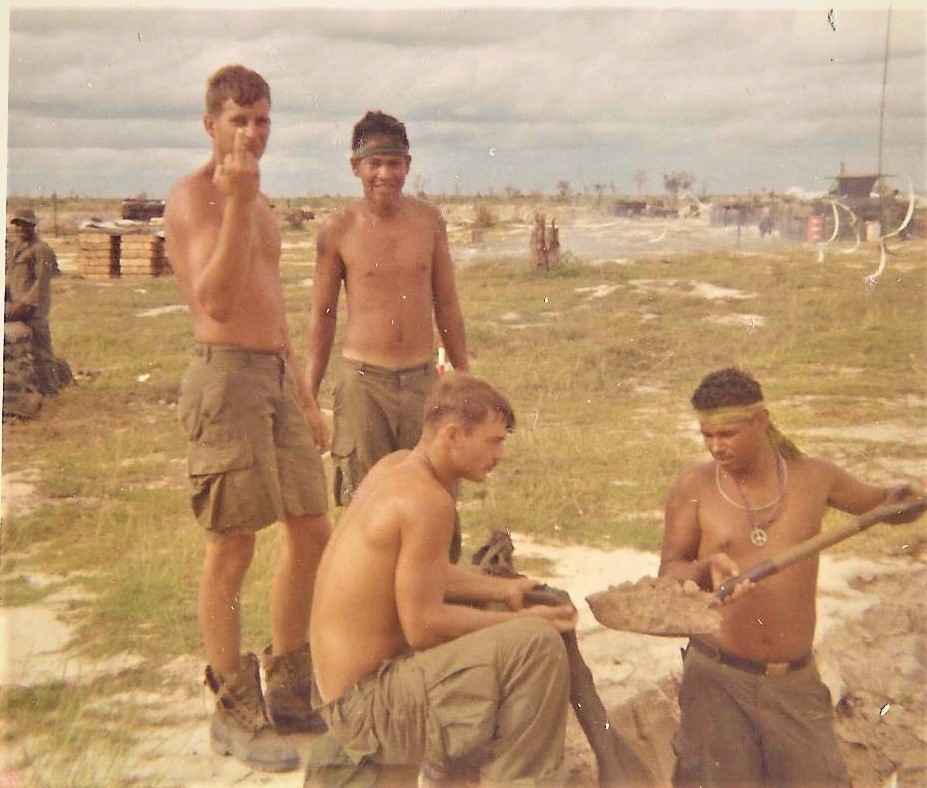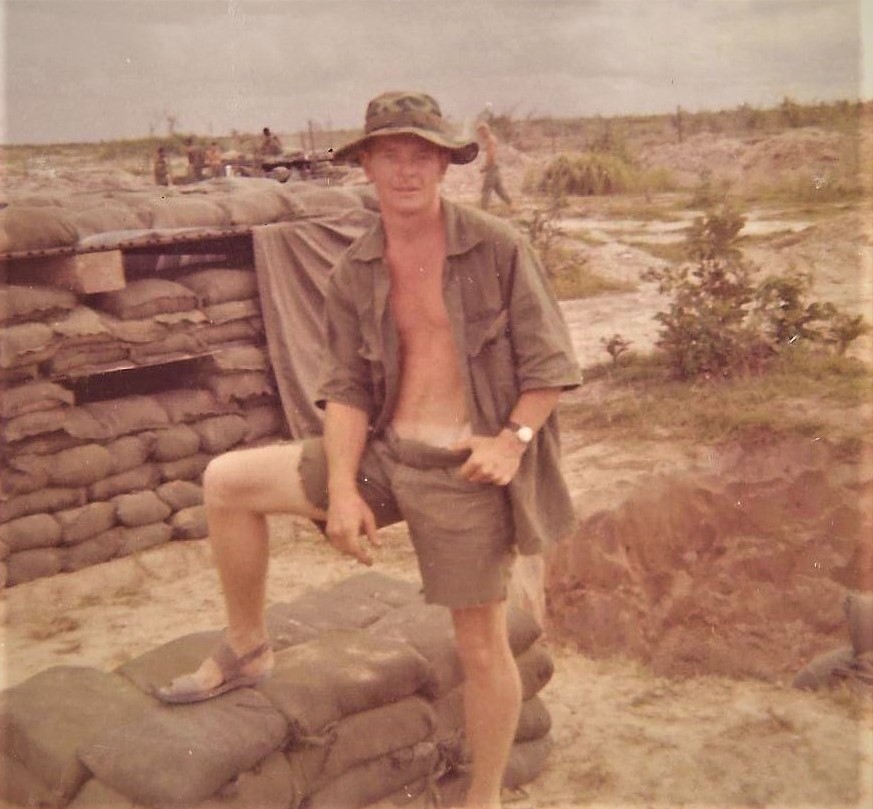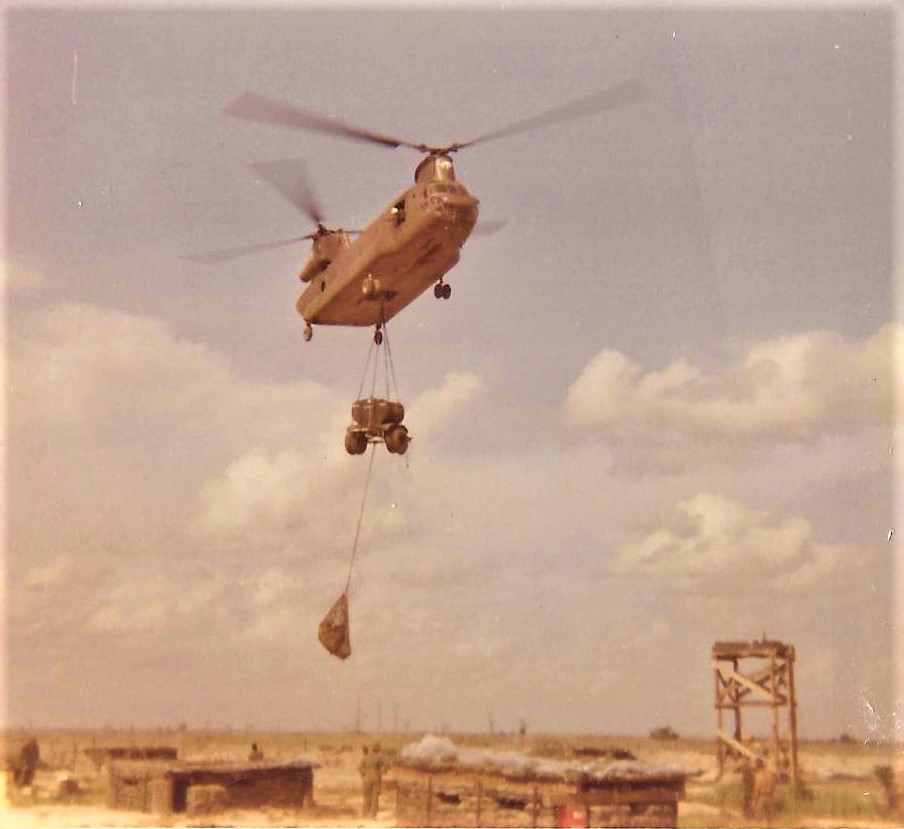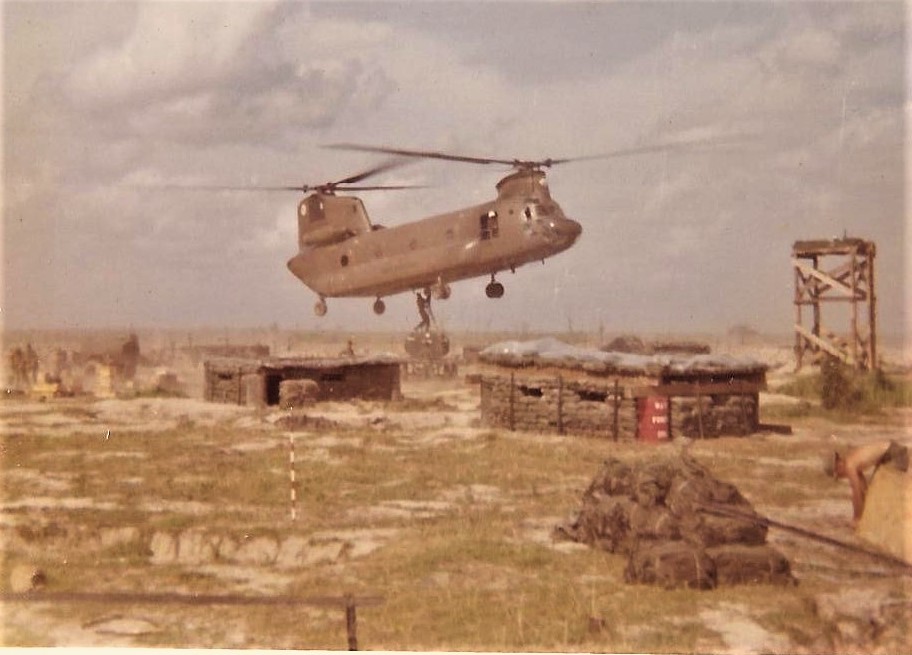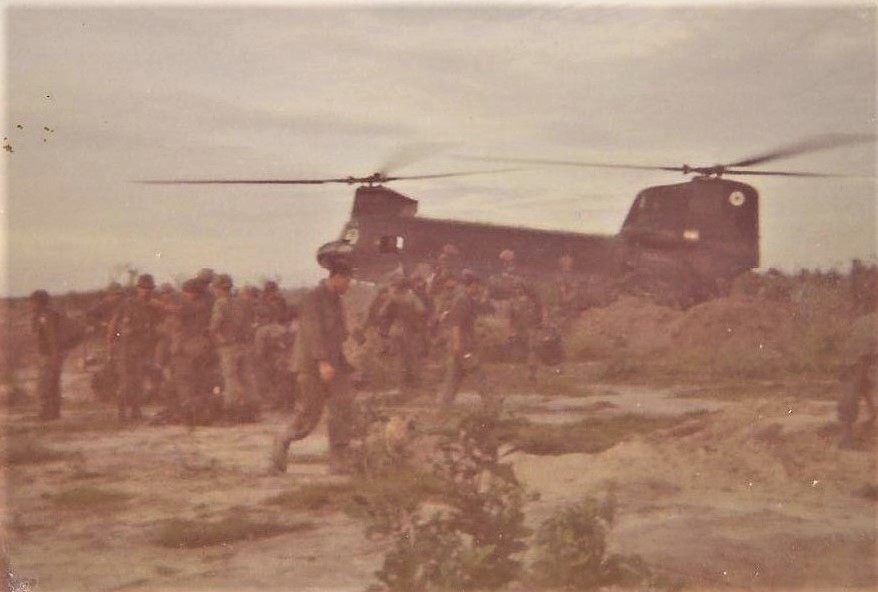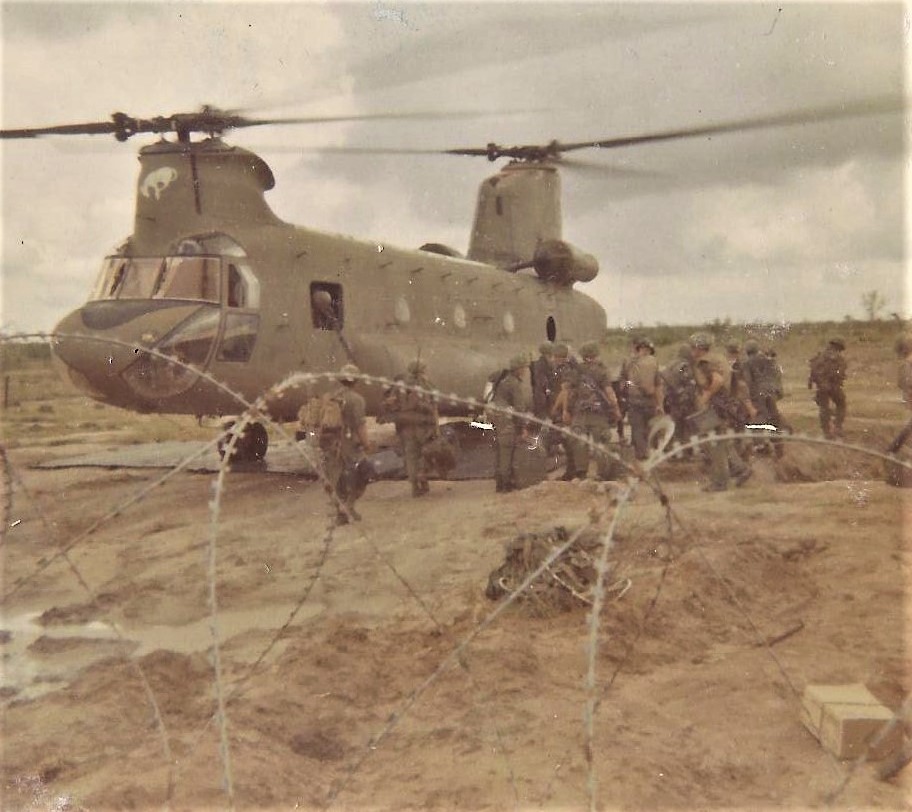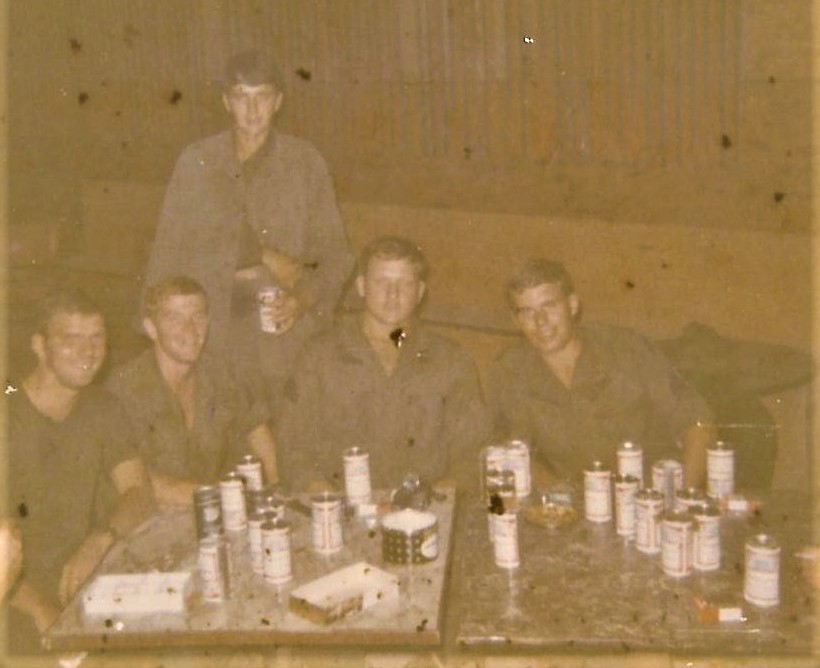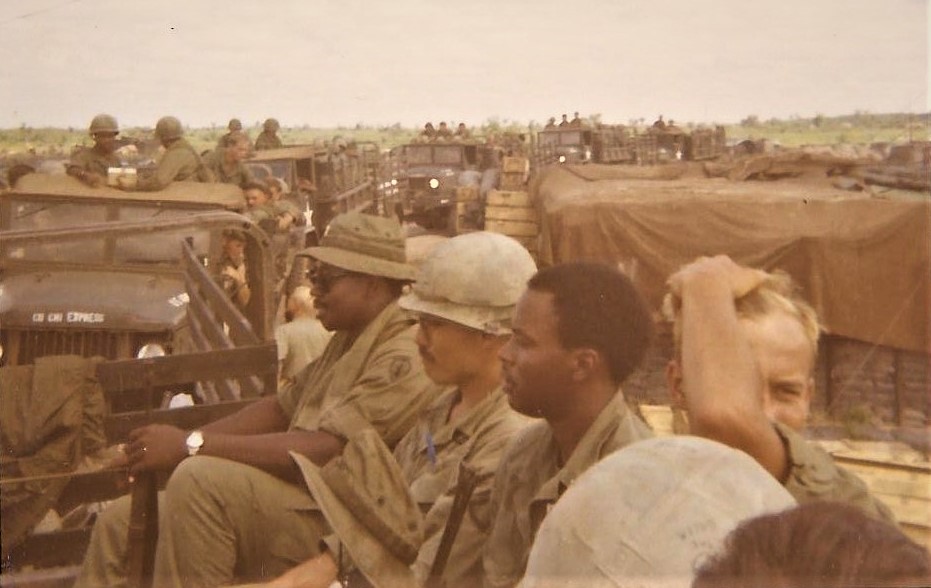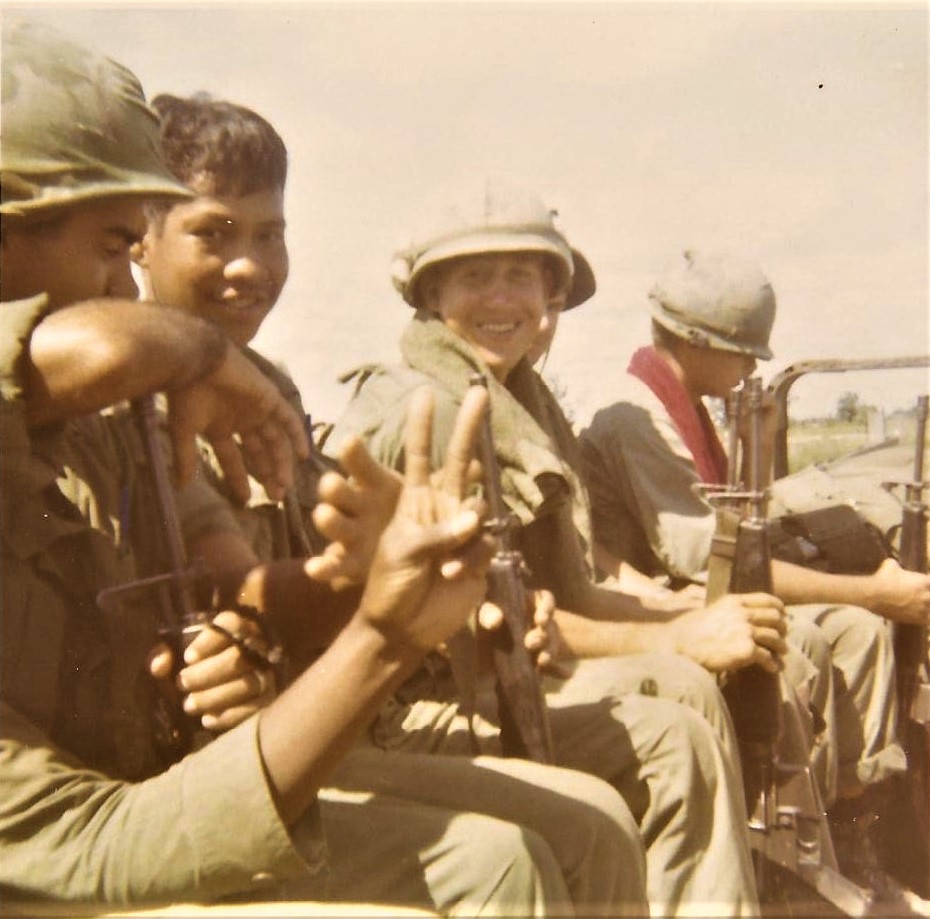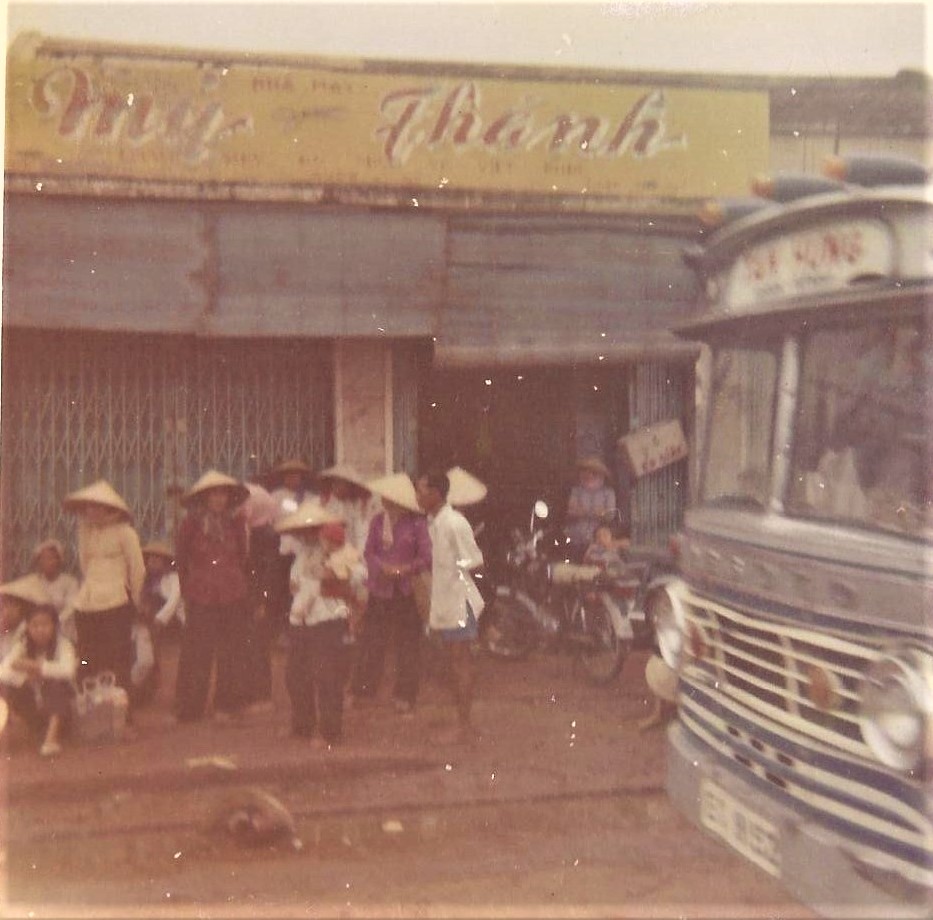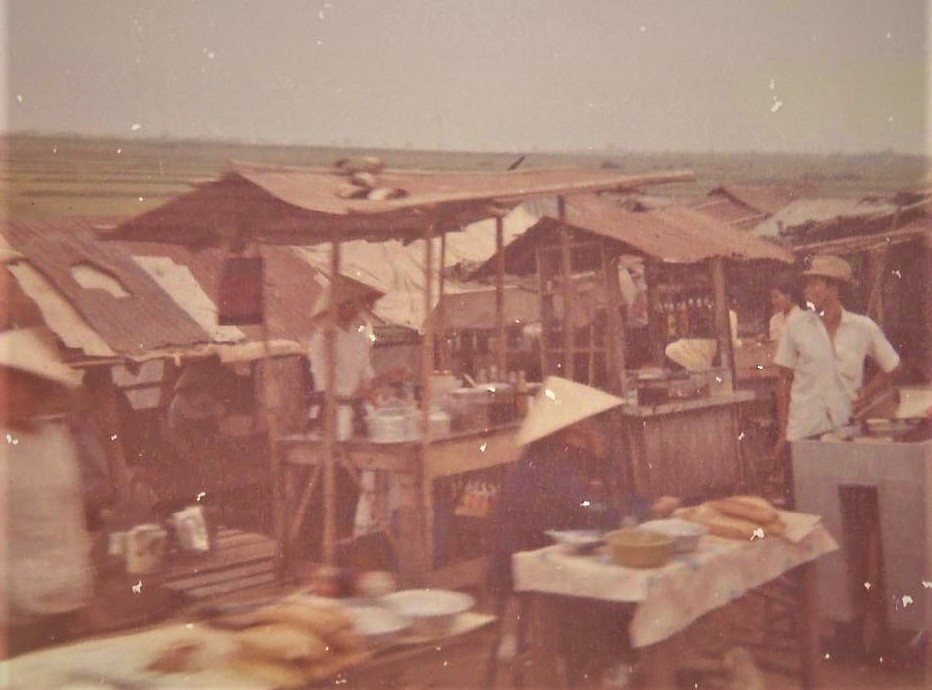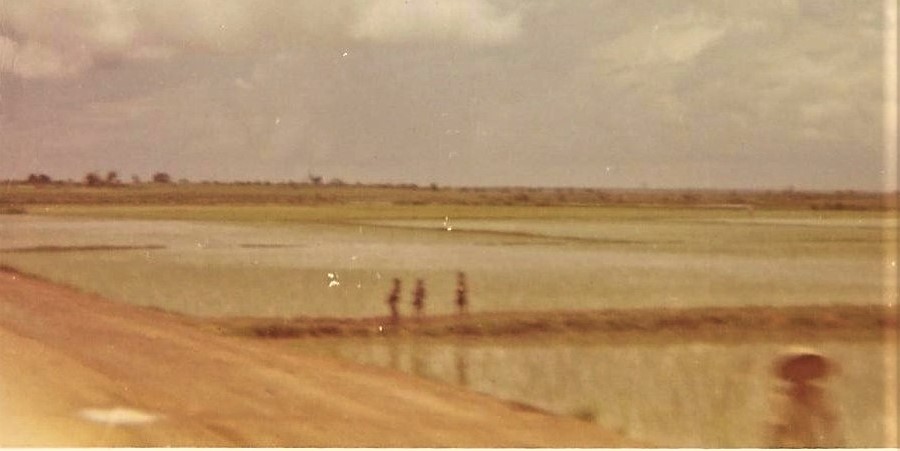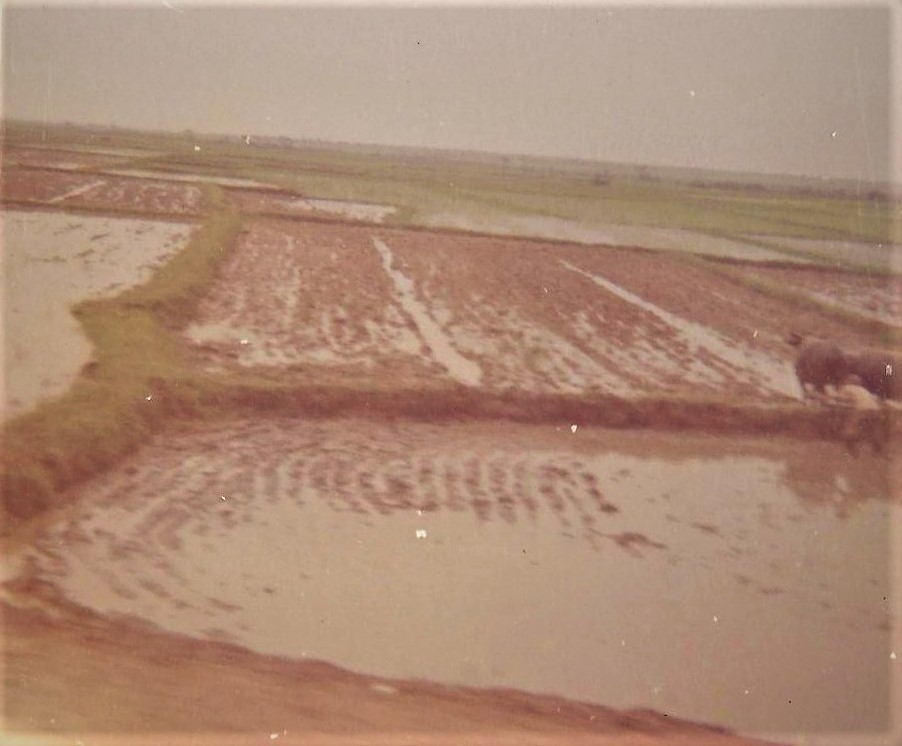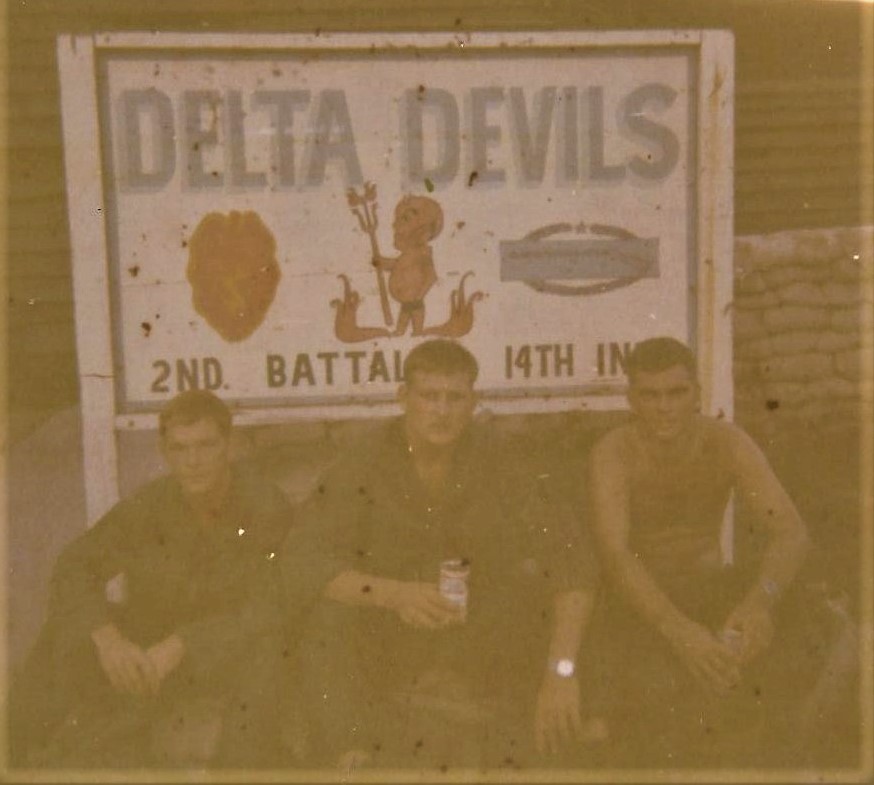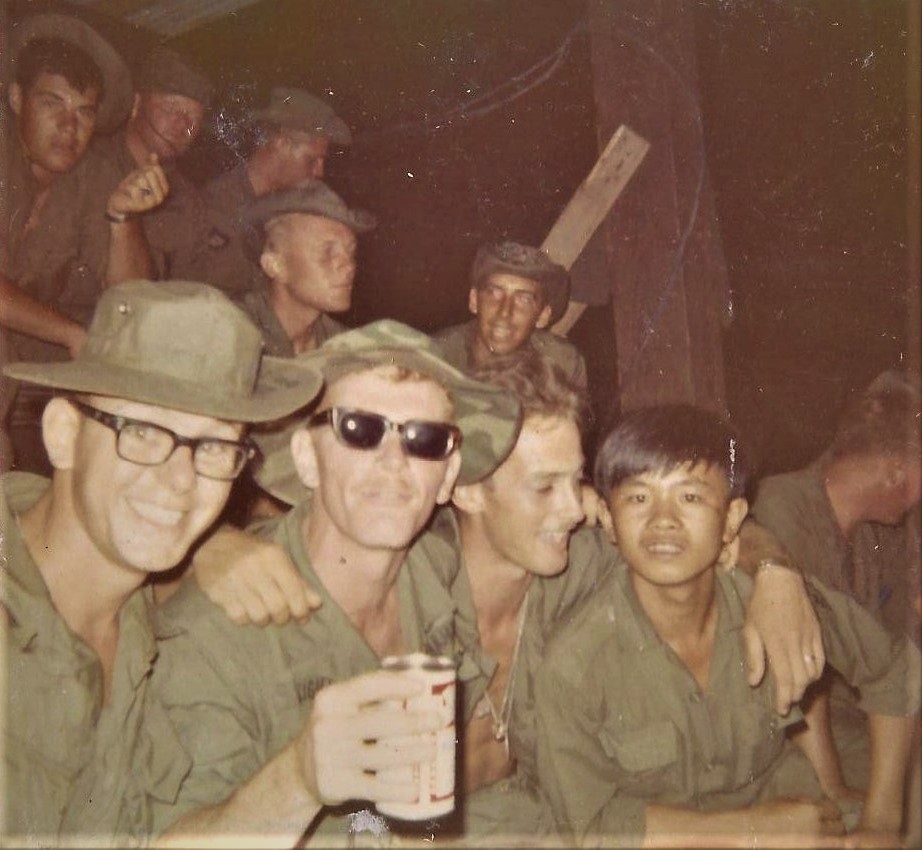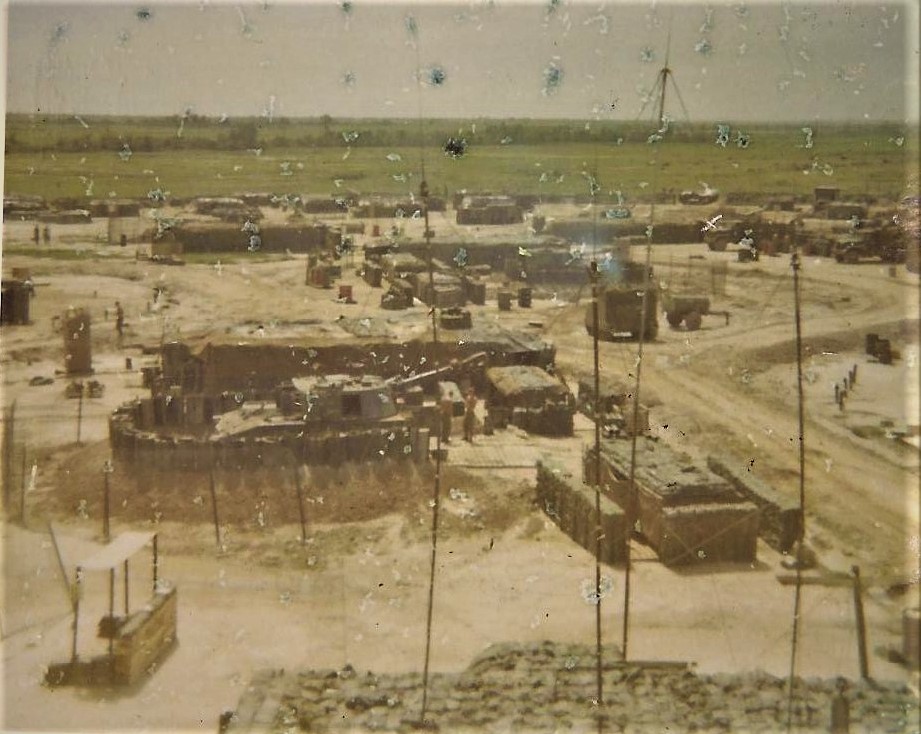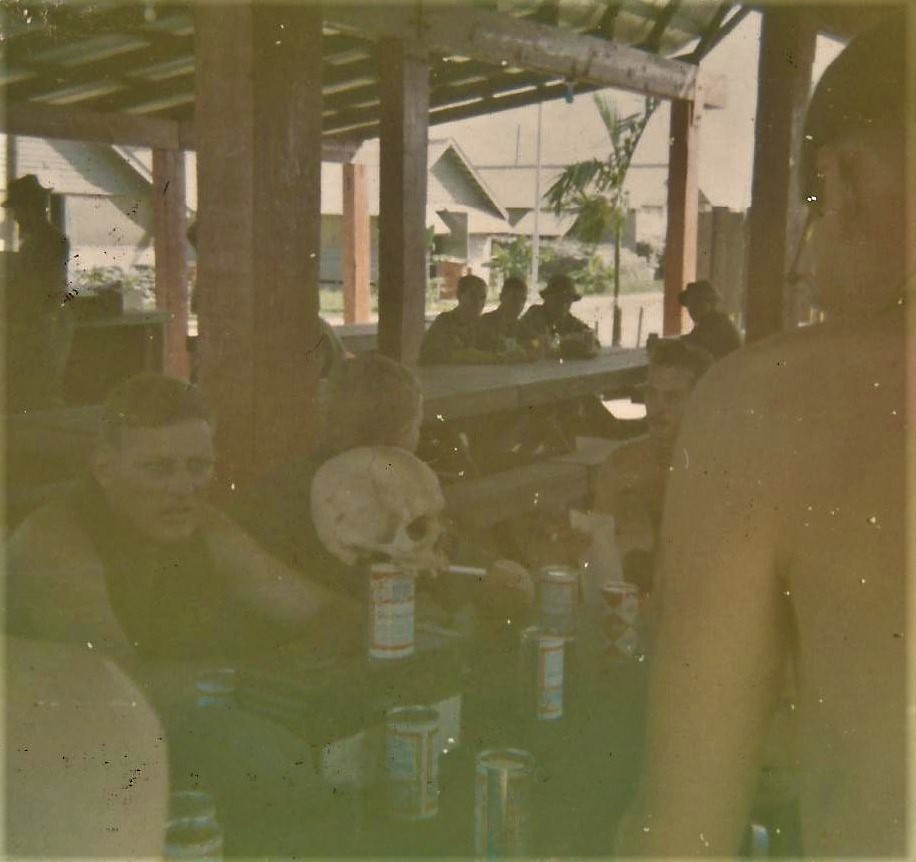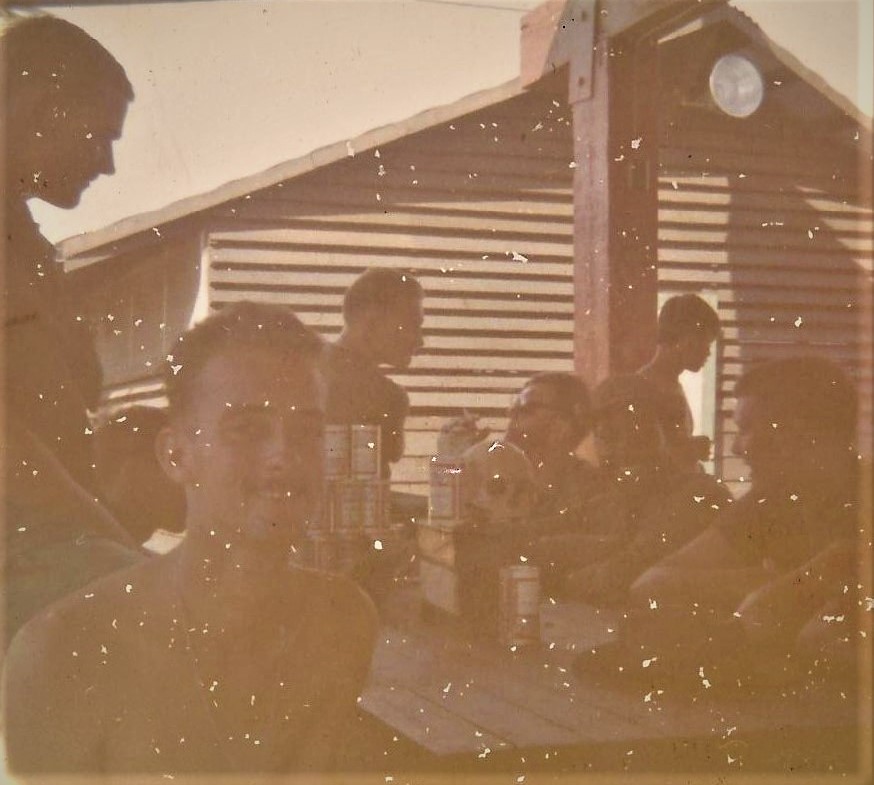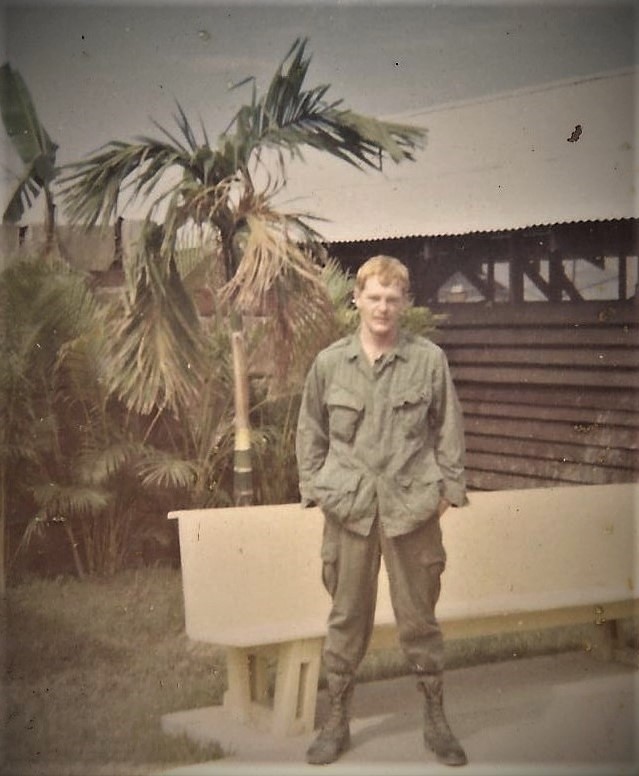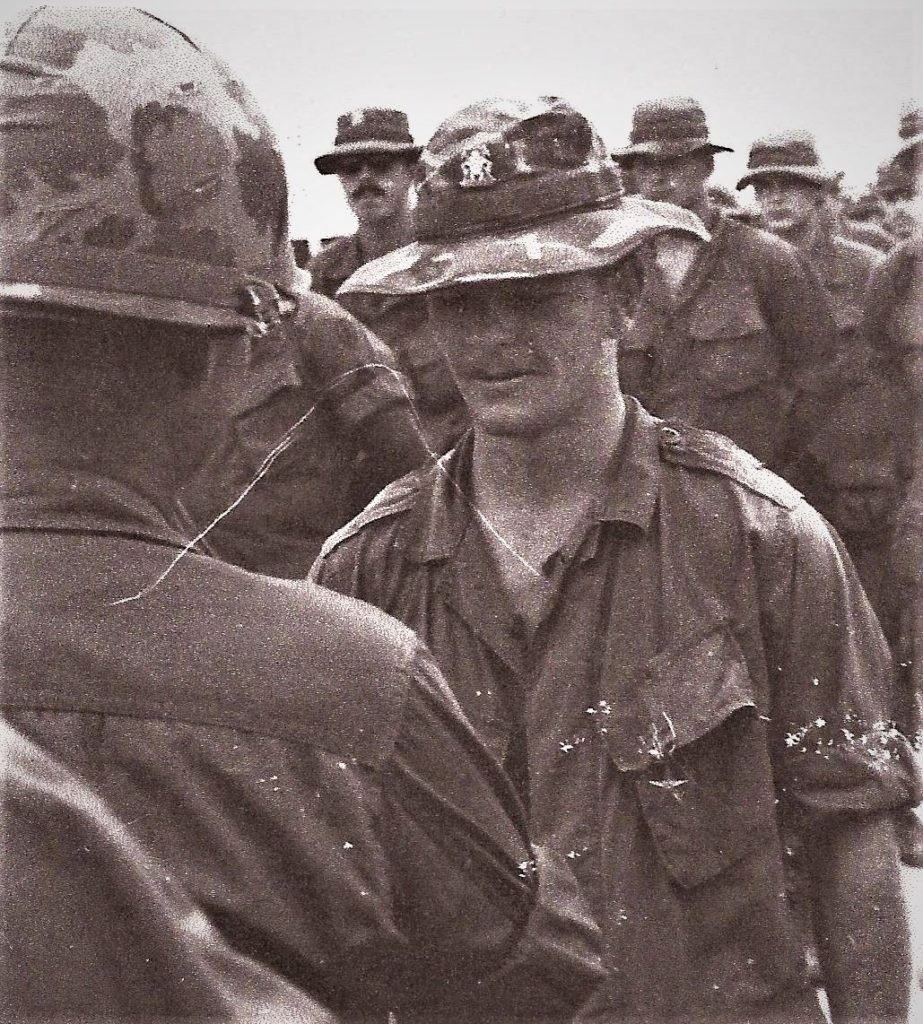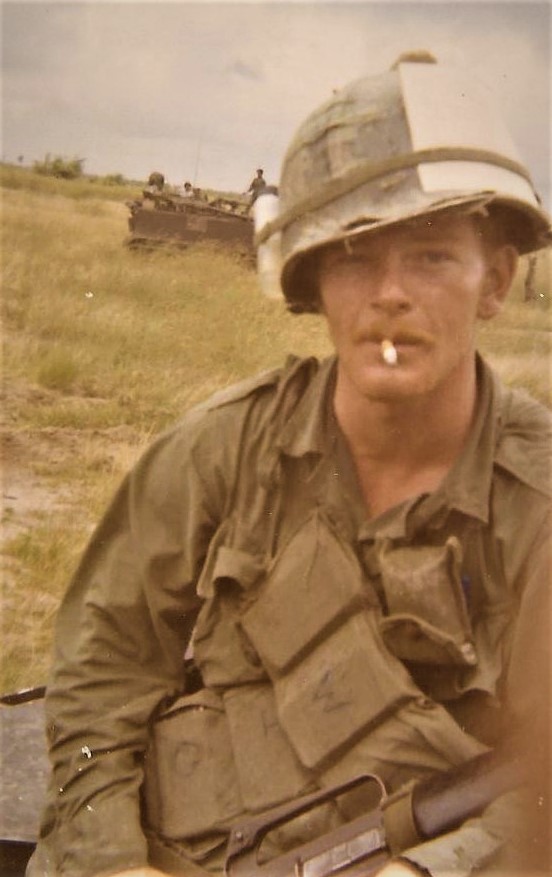
Larry R Wright
Military History Summary for
Larry Wright
In March of 1968 Larry Wright received his draft notice and was inducted into the U.S. Army on July 2, 1968. He received Basic Training at Fort Bliss, Texas and Advanced Individual Training – Infantry at Fort Ord, California. He received orders for the Republic of Vietnam and departed on Thanksgiving Day, November 28, 1968.
He was assigned to Delta Company, 2nd Battalion, 14th Infantry Regiment of the 25th Infantry Division, headquartered in Cu Chi, South Vietnam. After a few days of Booby Trap Training and acclimation he immediately joined Delta Company’s Weapons Platoon (4th) in the field. He quickly became a Weapons Platoon Squad Leader responsible for a 81 mm mortar gun team. As needed he was a Rifleman for Delta, occasionally walking point and point flank and participated in heliborne air assaults, search and destroy operations, night time ambushes, bridge security, and establishing and operating company “hard spots” and “night loggers” in contested areas.
Delta Company was located within the 25th Infantry’s Division area of operation north and west of Saigon up to the Cambodian border. Specific sites were Duc Hoa, Ba Bep, Phu Cong, Hunsley, Hobo Woods, FSB Patton II, FSB Devins, FSB Keene and FSB Emory, all near the Tunnels of Cu Chi. Seven of the twelve months tour was spent in the Hobo Woods area.
In April he was chosen to attend Lightning Combat Leadership Course with a night time ambush for a final exam which resulted in enemy contact and body count — a first.
Larry was awarded the Bronze Star for outstanding meritorious service while serving as a Squad Leader and promoted to Sergeant and was offered a Battlefield Commission (officer) to extend his tour in the field, which he declined. He also received the National Defense Service Medal, Vietnam Service Medal with 3 Bronze Service Stars, Vietnam Campaign Medal with 60 Device, and the Combat Infantryman Badge.
After serving a year in Vietnam, he returned to the U.S. and served the remainder of his military obligation as a Track Commander of an armored personnel carrier (APC) with the 5th Infantry Division – Mechanized at Fort Carson, guarding NORAD’s Cheyenne Mountain, Colorado Springs, Colorado.
He was honorably discharged at Fort Carson, Colorado July 1, 1970.
Larry is a member of the Veterans of Foreign Wars, American Legion, and the 25th Infantry Division Association (IDA). Larry often attends the 25th Infantry “Tropic Lightning” annual reunion.
He currently volunteers at the Iowa Gold Star Military Museum, Camp Dodge, Johnston, Iowa, welcoming guests, giving tours, explaining museum displays, and digitizing old Iowa military personnel records. View a virtual museum tour, using indoor drone cameras, at this youtube site.
Iowa Gold Star Military Museum Memorial Day 2019
Iowa Gold Star Military Museum Veteran’s Day 2020 Video Interviews
Start at 9:08 on video Part 1 to hear Vietnam video interview.
Iowa Gold Star Military Museum Parade Jeep
Vietnam War Veterans and Museum Volunteers David Grant (driving) and Larry Wright drove the museum’s M38A1 Jeep (built in 1953) in the Johnston Green Day’s parade on Saturday, June 19, 2021.
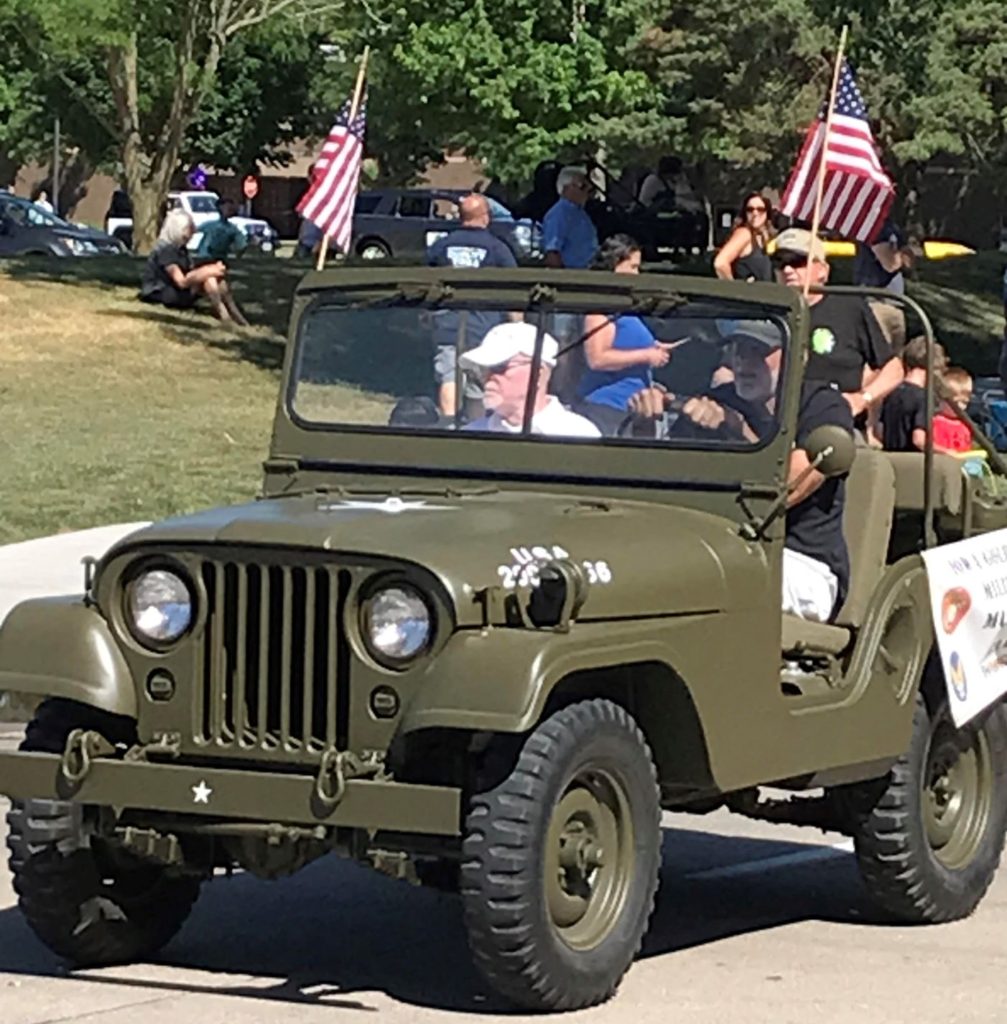
Iowa Gold Star Military Museum Vietnam Living History Event
Vietnam History Days Keynote Speaker June 2022
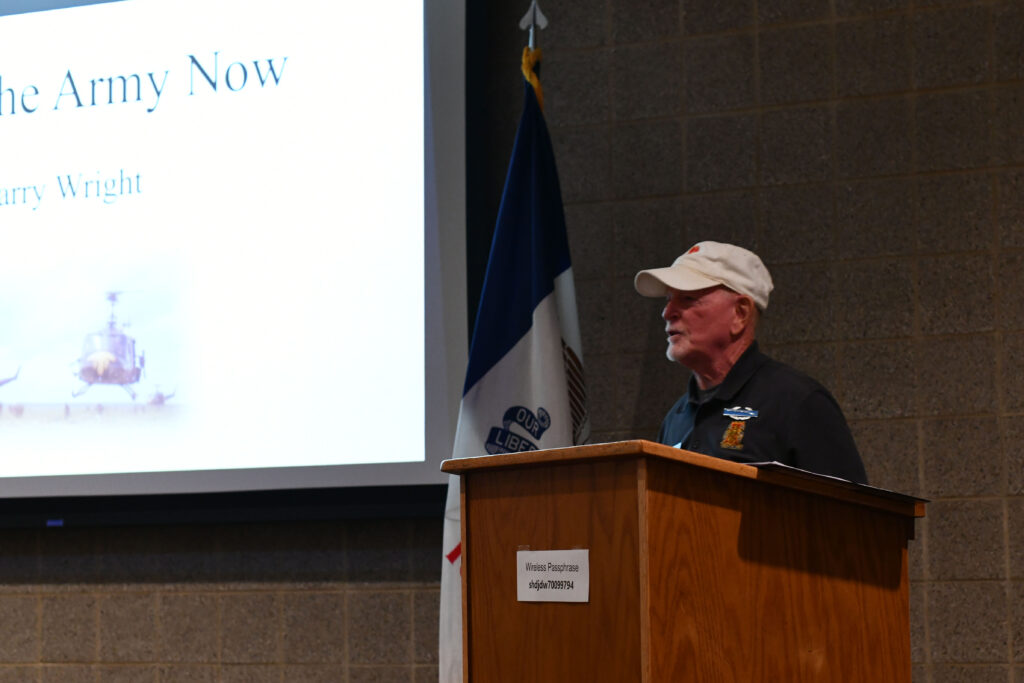
Volunteer Gold Star Award
Larry Receives the Gold Star Volunteer Award, October 2022.
Larry Wright, Major General Benjamin Correll, Museum Board President Bob Holliday
1968 – 69 Vietnam Photos
Awarded Bronze Star
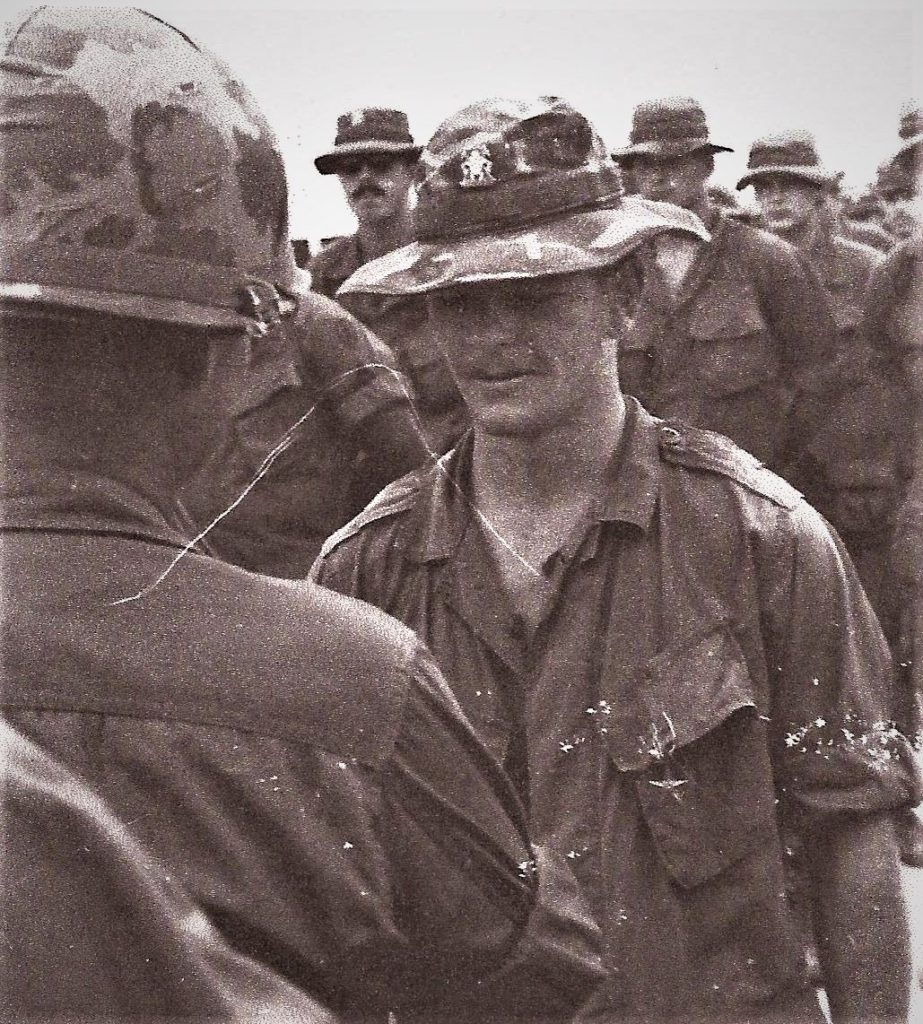
Vietnam Photos
25th Infantry Division
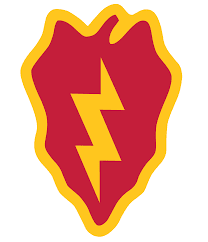
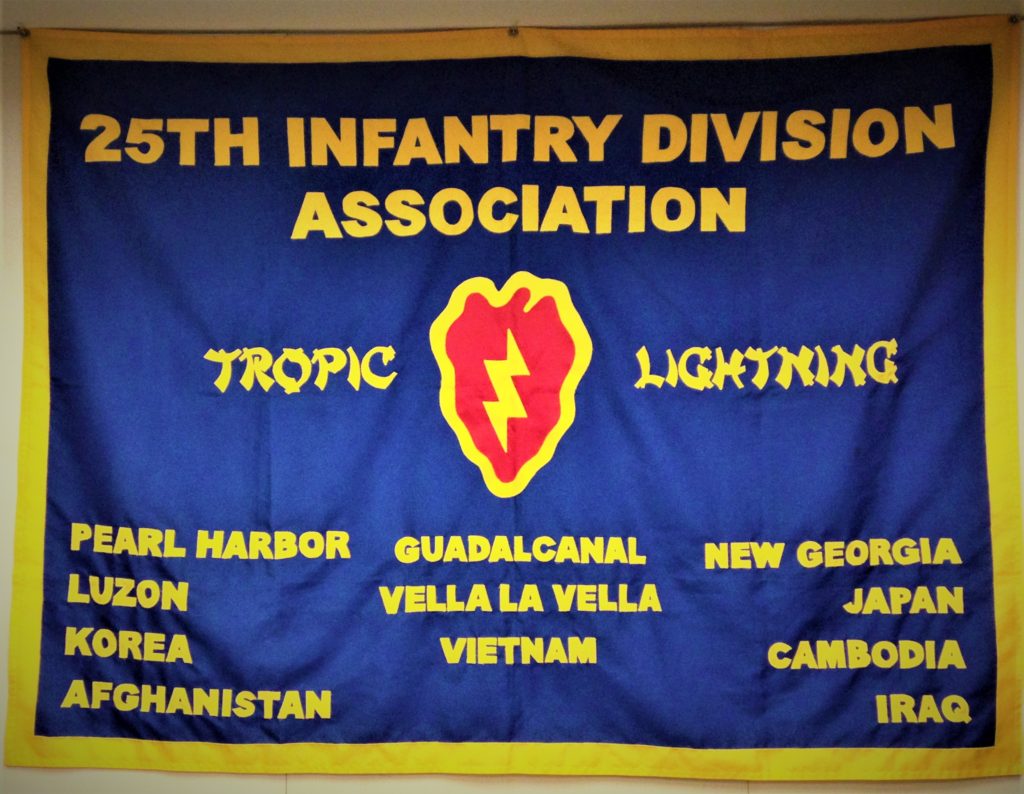
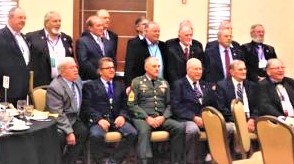
The 25th Infantry Division was formed in 1941 from elements of the old Hawaiian Division. It takes its shoulder patch from the Taro leaf, a red plant native to Hawaii, with a gold border, and is superimposed with a gold lightning bolt to represent its ability to strike quickly and aggressively. The 25th is considered the guardian of the Pacific and was the first U.S. unit to engage the enemy in WW II and it is only one of two U.S. Army units to have fought in most major conflicts since then. The 25th earned the designation “Tropic Lightning” for its unprecedented speed at Guadalcanal and its division motto “Ready to Strike Anytime Anywhere”.
During the Vietnam war, the 25th operated north and west of Saigon to the Cambodian border. It fought in Vietnam from January 1966 until its departure in spring 1971 sustaining over 5000 killed in action amongst the highest of all units. Preceding its official arrival in Vietnam, the 25th provided volunteer “shotgunners” (door gunners) to protect troop transport helicopters from January 1963 to January 1966 which resulted in an eight plus year combat role, the most of any U.S. unit.
Second Battalion
14th Infantry Regiment
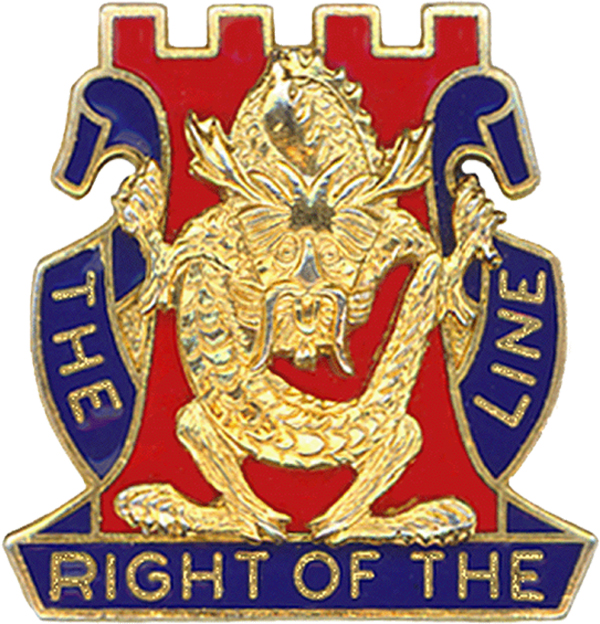
“He who bothers dragons capable of breathing fire should not be surprised when smoke is brought on him” August 26, 1969.
(Published in Tropic Lightning News, Cu Chi, Vietnam, September 8, 1969, page 1.)
The 14th Infantry Regiment was organized on May 3, 1861.
In recognition of the regiment’s heroic performance of duty during twelve of the bloodiest campaigns of the American Civil War, General George Meade, awarded the 14th Infantry Regiment the place of honor at the “right of the Line” in the Grand Review of the Armies in Washington, D.C. at the end of the war. This is where the regiment takes its motto “The Right of the Line”.
The Golden Dragon image comes from the China Relief Expedition (aka Boxer Rebellion) of 1900. The Golden Dragon is a highly regarded symbol in China and the walled abutment represents the Forbidden City of Peking.
Combat Infantryman Badge
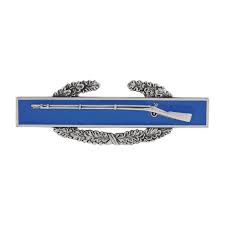
The Combat Infantryman Badge (CIB) is the most coveted award in the U.S. Army and is only earned under hostile enemy fire. The CIB is awarded to infantrymen and Special Forces soldiers who fought in active ground combat. It recognizes the inherent sacrifices of all infantrymen, and that they face a greater risk of being wounded or killed in action than any other military occupational specialties.
